 "ttyymmnn" (ttyymmnn)
"ttyymmnn" (ttyymmnn)
03/05/2019 at 12:35 • Filed to: wingspan, Planelopnik, TDIAH
 11
11
 37
37
 "ttyymmnn" (ttyymmnn)
"ttyymmnn" (ttyymmnn)
03/05/2019 at 12:35 • Filed to: wingspan, Planelopnik, TDIAH |  11 11
|  37 37 |
!!! UNKNOWN CONTENT TYPE !!!
Welcome to
This Date in Aviation History
, getting of you caught up on milestones, important historical events and people in aviation from March 2 through March 5.
!!! UNKNOWN CONTENT TYPE !!!
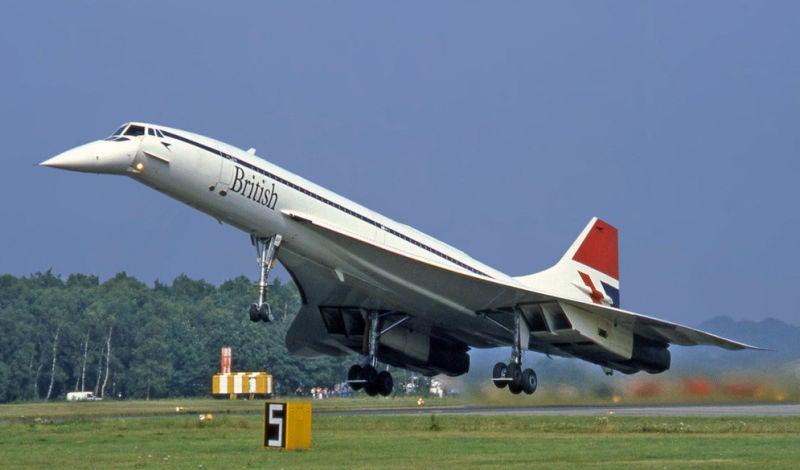 !!!CAPTION ERROR: MAY BE MULTI-LINE OR CONTAIN LINK!!!
!!!CAPTION ERROR: MAY BE MULTI-LINE OR CONTAIN LINK!!!
March 2, 1969 – The first flight of the Aérospatiale/British Aircraft Corporation Concorde. The evolution of the airplane has branched out in many directions, and the airplane has taken many forms, but perhaps one constant throughout its developmental history has been the quest for ever greater speed. In 1903, the Wright Brothers’ first flight covered the ground at a speed of 6.8 mph, but a mere 44 years later Chuck Yeager piloted the !!!error: Indecipherable SUB-paragraph formatting!!! past the speed of sound. In Yeager’s day, supersonic flight was mainly the purview of the world’s militaries, and it remains so to this day. Nevertheless, aircraft designers were keen to see how supersonic technology might be applied to commercial aircraft, and the English and French each worked individually on their own solutions.
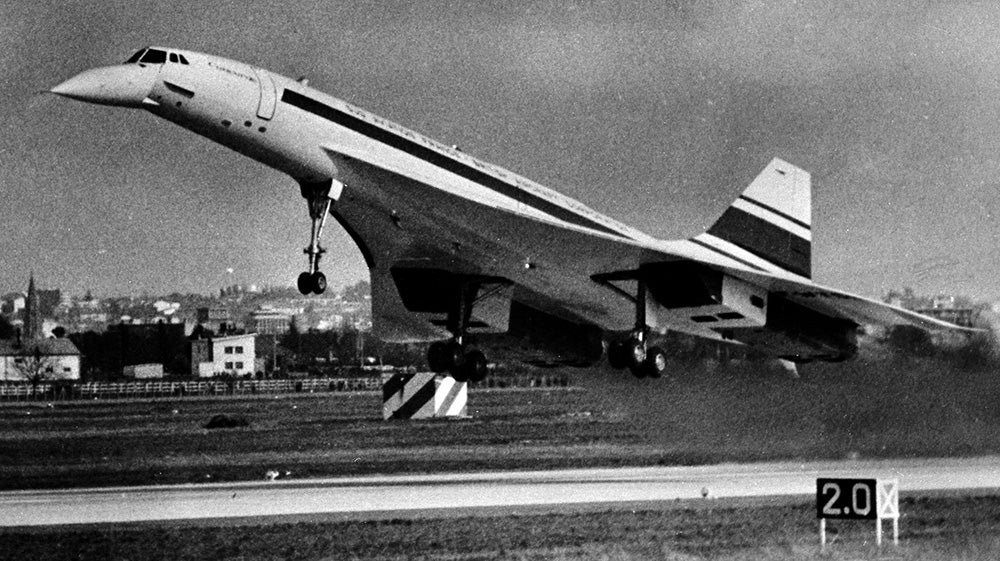 !!!CAPTION ERROR: MAY BE MULTI-LINE OR CONTAIN LINK!!!
!!!CAPTION ERROR: MAY BE MULTI-LINE OR CONTAIN LINK!!!
In the early 1950s, the !!!error: Indecipherable SUB-paragraph formatting!!! in England formed the Supersonic Transport Aircraft Committee to study the concept of a supersonic airliner. After considerable research on various design possibilities, they settled on an !!!error: Indecipherable SUB-paragraph formatting!!! planform for the wing, with a slender fuselage to reduce drag. Their work culminated in the !!!error: Indecipherable SUB-paragraph formatting!!! , an airliner that would have seated about 100 passengers with a top speed of Mach 2, though it never progressed beyond the design phase. Across the English Channel, the French were also investigating a supersonic airliner, and had come to many of the same design conclusions reached by the British. However, their concept for the !!!error: Indecipherable SUB-paragraph formatting!!! , while similar in shape, was significantly smaller, and was envisioned more as a replacement for the Caravelle airliner and not for transatlantic flights.
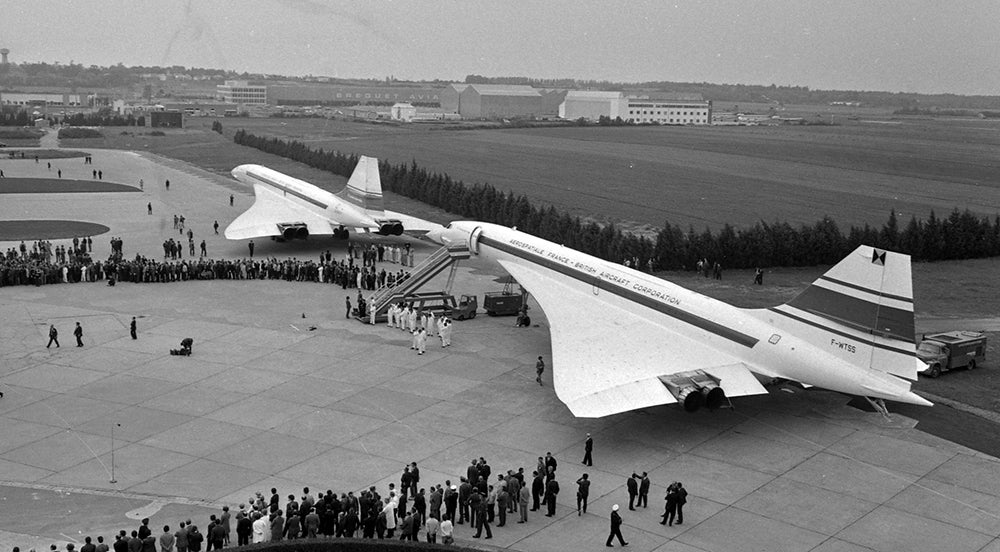 !!!CAPTION ERROR: MAY BE MULTI-LINE OR CONTAIN LINK!!!
!!!CAPTION ERROR: MAY BE MULTI-LINE OR CONTAIN LINK!!!
With both countries working towards much the same goal, it became clear that an international partnership would best serve their interests, and help compete against the US dominance in commercial airliner production. Boeing had already begun initial investigation of their own into building an SST. In November 1963, the United Kingdom and France signed a treaty binding the two countries to work together on the project, and the name Concorde was chosen in honor of this landmark international agreement. Construction of two prototypes began in 1965, the first in France (001) and the second in England (002). The French Concorde flew first on March 2, 1969, followed a month later by the English Concorde on April 9, 1969. Ultimately, 20 Concordes were built, six of which were prototypes and used for development and testing. Air France and British Airways each received seven aircraft.
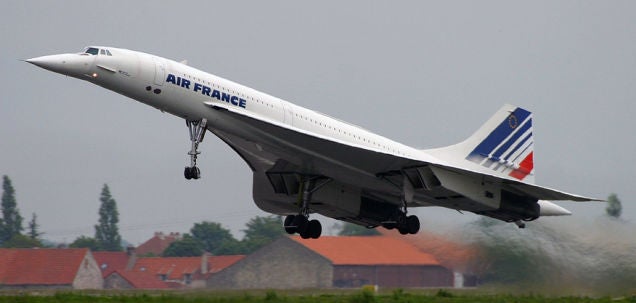 !!!CAPTION ERROR: MAY BE MULTI-LINE OR CONTAIN LINK!!!
!!!CAPTION ERROR: MAY BE MULTI-LINE OR CONTAIN LINK!!!
Concorde entered service with British Airways on January 21, 1976 flying between London and Bahrain while Air France pioneered supersonic passenger service between Paris and Rio de Janeiro. British Airways flew daily between New York and London, and weekly flights to Barbados during the holiday season. They also served Dallas, Miami, Singapore, Toronto, and Washington, DC. Air France flew between Paris and New York five times a week, as well as scheduled flights to Caracas, Mexico, Rio, and Washington, DC. Concorde’s four !!!error: Indecipherable SUB-paragraph formatting!!! afterburning turbojets provided a maximum cruising speed of Mach 2.04, and an average flying time of three-and-a-half hours cut the time between transatlantic destinations in half when compared to traditional airliners. Concorde set a number of records, including the fastest eastward transatlantic flight when an SST departed on February 7, 1996 from New York’s JFK International and touched down at London Heathrow in just 2 hours, 52 minutes, 59 seconds. Concorde also set records for circumnavigation of the globe in both directions, though with numerous refueling stops along the way.
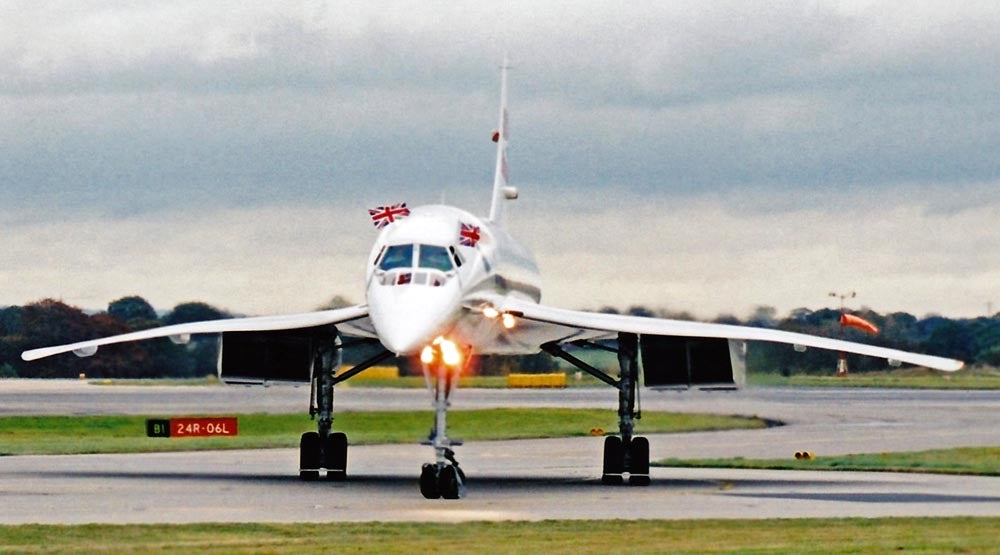 !!!CAPTION ERROR: MAY BE MULTI-LINE OR CONTAIN LINK!!!
!!!CAPTION ERROR: MAY BE MULTI-LINE OR CONTAIN LINK!!!
The 14 operational Concordes enjoyed an exceptional safety record, though there were two non-fatal accidents and a spate of tire failures throughout their service history. The only loss of a Concorde occurred on July 25, 2000 when !!!error: Indecipherable SUB-paragraph formatting!!! (F-BTSC) crashed shortly after takeoff from Charles de Gaulle airport when debris on the runway punctured a tire and ruptured the fuel tank. The burning airliner crashed into a hotel, killing all 109 passengers and crew along with four persons on the ground. Following the crash, all Concordes were grounded until safety improvements could be made, and service resumed in November 2001. Though the crash didn’t lead directly to the end of Concorde flights, its service days were numbered. The accident led to a drop in bookings for flights on Concorde at a time when all passenger numbers were down following the !!!error: Indecipherable SUB-paragraph formatting!!! . Concorde’s high fuel costs and small passenger capacity meant that the SST had never been a money-maker for the airlines and, with rising maintenance costs also figuring into the balance sheet, Air France and British Airways made the decision to retire Concorde in 2003. Twelve of the original 14 operational aircraft were dispersed to display sites in Europe, the US, and Barbados. Of the remaining two, one aircraft was lost in the 2000 crash, and the other was used for spare parts and scrapped in 1994.
!!! UNKNOWN CONTENT TYPE !!!
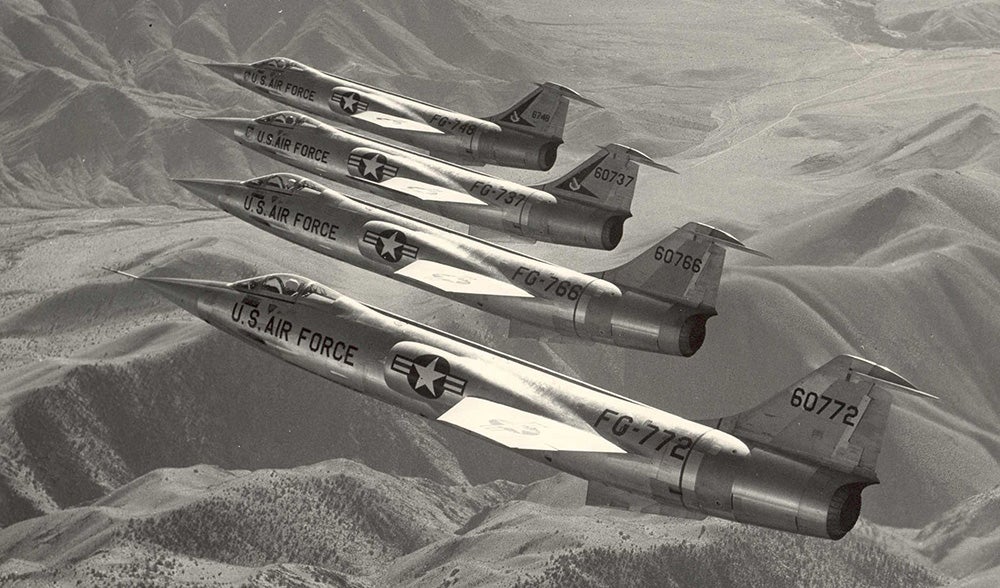
A formation of F-104A Starfighters, the last A models to be built (US Air Force)
March 4, 1954 – The first flight of the Lockheed F-104 Starfighter. When the first jet fighters appeared during WWII, they were built with the prevailing technology of WWII, and that meant straight wings. But when troves of data on the benefits of swept wings were !!!error: Indecipherable SUB-paragraph formatting!!! from the Germans near the end of the war, the swept wing quickly became a standard design element of jet fighters going forward. Delta wings, another design element pioneered by the Germans, were also adopted. But if anybody was going to buck that trend, it was Lockheed’s !!!error: Indecipherable SUB-paragraph formatting!!! , perhaps America’s greatest aircraft engineer and one who became famous—or infamous—for doing things his way.
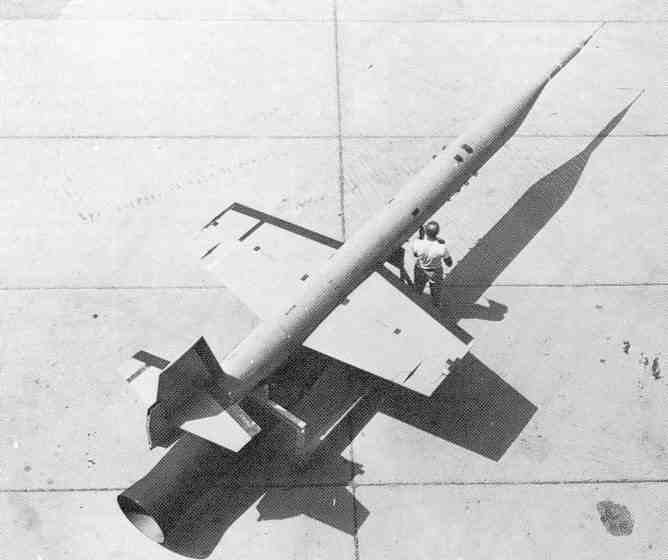
The Lockheed X-7 missile, with its trapezoidal wings (Author unknown)
During the Korean War, American pilots came face to face with smaller, more nimble Russian fighters like the !!!error: Indecipherable SUB-paragraph formatting!!! . While the Americans ultimately prevailed, due in large part to better training and more experienced pilots, it was a much closer fight in the early part of the war. In 1951, Kelly Johnson traveled to Korea to interview US pilots and ask them directly what they wanted to see in a new fighter. Most said they wanted something smaller, faster, and more maneuverable. So Johnson, never one to do things in half measures, envisioned a very small fighter wrapped tightly around a single powerful engine that could race at Mach 2 in level flight. For the all-important wings, Johnson eschewed the traditional swept or delta wings in favor of minimal, trapezoidal wings that bore a striking resemblance to the wings of the experimental !!!error: Indecipherable SUB-paragraph formatting!!! missile under development at the time. Johnson also gave the wings a slight anhedral, or downward angle, to help counteract potentially deadly !!!error: Indecipherable SUB-paragraph formatting!!! . High-pressure air was also blown over the flaps on landing to help decrease landing speeds. Where the wings of contemporary aircraft were used to house fuel or landing gear, the wings of the Starfighter were razor thin, so thin in fact that the leading edges were covered with a felt cap to protect the ground crews who serviced the fighter. Not all of Johnson’s ideas were winners. Early Starfighters were given a downward-firing ejection seat over concerns that pilots would not clear the T-tail, though this questionable arrangement was changed to a standard upward firing ejection seat in subsequent models.
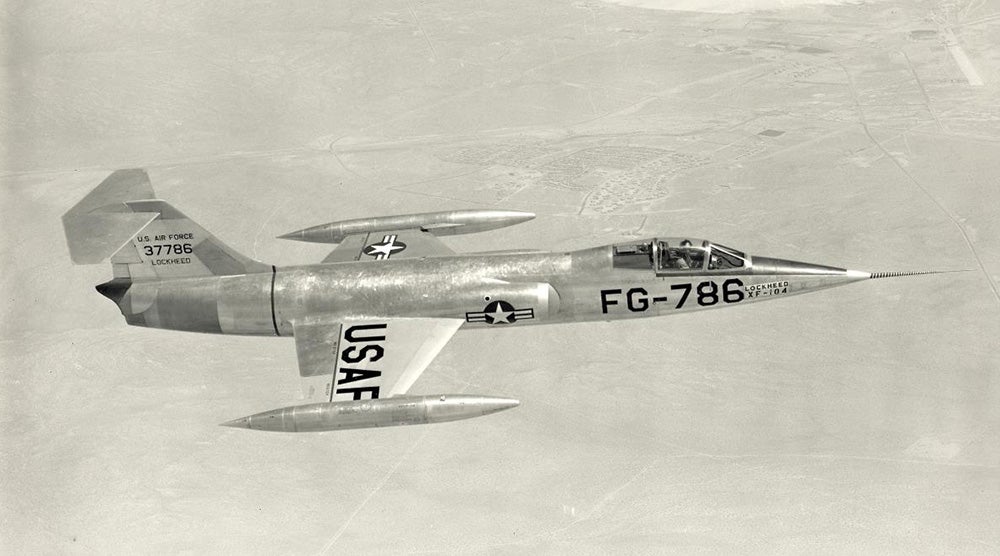
The prototype XF-104 (US Air Force)
The Starfighter moved from contract to first flight in less than one year, but development of the new fighter proved difficult, and it was four years before the first Starfighters entered service with the USAF. Then, just three months later, all F-104s were grounded because of engine problems and a series of accidents. The F-104A also suffered from a lack of all-weather capability and short range and, after only one year of frontline Air Force service, the A model was passed to units of the Air National Guard or repurposed as the unmanned QF-104 target drone. Lockheed responded to these shortcomings with the F-104C, which added an improved fire control radar and capacity for more ordnance, and the Air Force sent the Starfighter to Vietnam. Though it served two tours, F-104 pilots claimed no victories over enemy aircraft while losing 14 of their own aircraft in the process. By this time, the Air Force had lost interest in the Starfighter, and that could have been the end of the road for Johnson’s innovative little fighter.
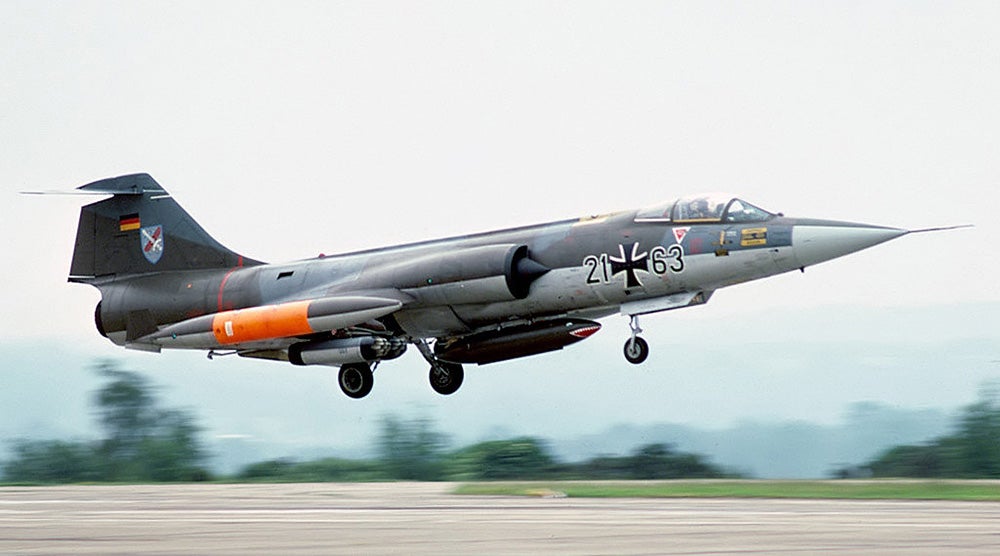 !!!CAPTION ERROR: MAY BE MULTI-LINE OR CONTAIN LINK!!!
!!!CAPTION ERROR: MAY BE MULTI-LINE OR CONTAIN LINK!!!
The Starfighter won a reprieve from the scrap pile in 1959 when a group of European countries led by Germany decided to procure the F-104 as a multi-mission attack fighter to replace older aircraft in service. The selection was controversial, though, and accusations that Lockheed bribed the European officials to accept the Starfighter dogged the decision. The F-104G (G for Germany) was built under license by Canadair and by a consortium of European companies including Messerschmitt/
!!!error: Indecipherable SUB-paragraph formatting!!!
, Dornier, Fiat, Fokker, and SABCA. Dubbed the Super Starfighter, it had a strengthened fuselage and wing, increased fuel capacity, enlarged fin and redesigned flaps for combat maneuvering. And, unlike the original F-104, which sacrificed a fire control radar to save space and weight, the F-104G was fitted with a radar as well as an inertial navigation system, the first on any production fighter. Despite these improvements the F-104G service with Germany was not without problems, particularly with wing strength and pilot workload, and it was not popular. Nevertheless, the F-104G made up the bulk of all Starfighters produced, with 1,122 out of a total of 2,578 built by the European consortium. Though the US Air Force was done with the Starfighter by 1969, it served in Europe for another 10 years, with the final variant, the Aeritalia F-104S, serving until 2004.
!!! UNKNOWN CONTENT TYPE !!!
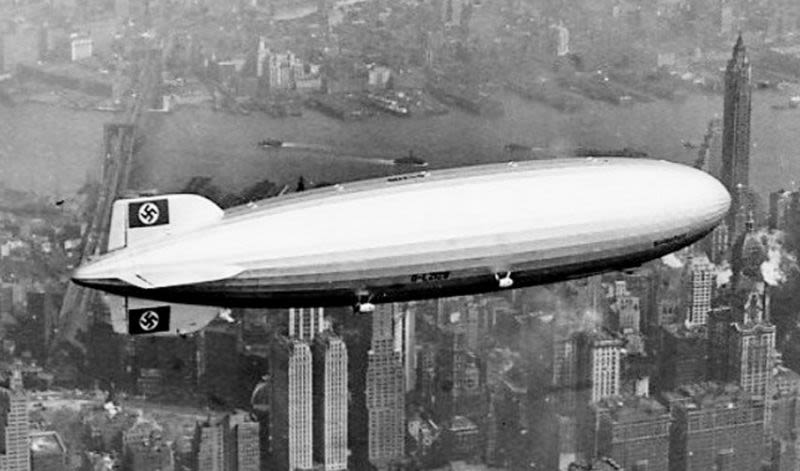 !!!CAPTION ERROR: MAY BE MULTI-LINE OR CONTAIN LINK!!!
!!!CAPTION ERROR: MAY BE MULTI-LINE OR CONTAIN LINK!!!
March 4, 1936 – The first flight of the
Hindenburg
(LZ 129).
Though the airplane gets much of the attention for helping mankind slip the surly bonds of earth, it was a balloon that first carried a man into the air on November 21, 1783, when the
!!!error: Indecipherable SUB-paragraph formatting!!!
flew their hot air balloon over France. Less than two months later,
!!!error: Indecipherable SUB-paragraph formatting!!!
and the
!!!error: Indecipherable SUB-paragraph formatting!!!
, again in France, flew the world’s first hydrogen balloon, not only ascending to a then unheard of altitude of nearly 10,000 feet, but also carrying aloft instruments to measure temperature and barometric pressure. By 1785, a hydrogen balloon made the first flight across the English Channel and, in 1852, the first powered and steerable dirigible took to the skies in France. This semi-rigid airship paved the way for huge rigid airships with metal frames housing bags of hydrogen or helium, culminating with the
Hindenburg
, the largest flying machine ever built.
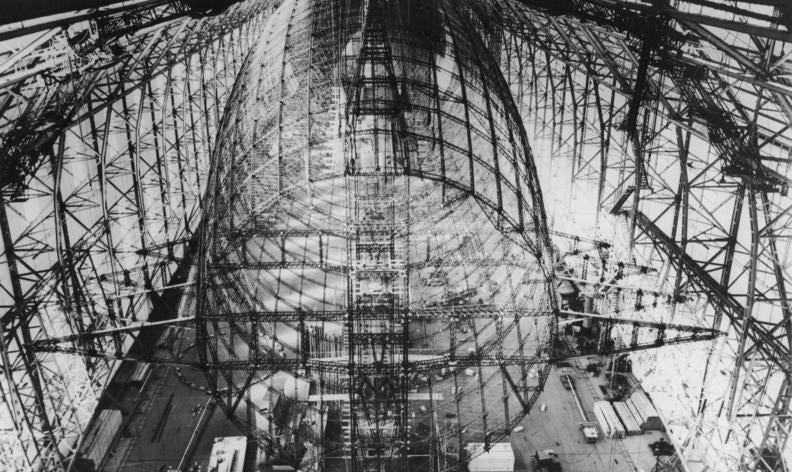 !!!CAPTION ERROR: MAY BE MULTI-LINE OR CONTAIN LINK!!!
!!!CAPTION ERROR: MAY BE MULTI-LINE OR CONTAIN LINK!!!
The first Zeppelin, a rigid airship named after its creator, German
!!!error: Indecipherable SUB-paragraph formatting!!!
, entered commercial service in 1910. Eventually, Zeppelins became the world’s first airliners, and transatlantic flights became commonplace. The
Hindenburg
, German dirigible LZ-129 (
Luftschiff Zeppelin
#129, registration D-LZ129), was the lead ship of the
Hindenburg
class. Designed and built by the
!!!error: Indecipherable SUB-paragraph formatting!!!
(
Luftschiffbau Zeppelin GmbH
) and named after the late
!!!error: Indecipherable SUB-paragraph formatting!!!
, the President of Germany from 1925-1934,
Hindenburg
was constructed of a
!!!error: Indecipherable SUB-paragraph formatting!!!
framework with with 16 cotton gas bags attached. The outer skin was made of cotton and
!!!error: Indecipherable SUB-paragraph formatting!!!
with a reflective coating to protect the gas bags from ultraviolet and infrared radiation. Powers by four Daimler-Benz DB 602 16-cylinder engines and adorned with enormous swastikas on the tail fins,
Hindenburg
was as much an object of Nazi propaganda as it was a transatlantic passenger vessel.
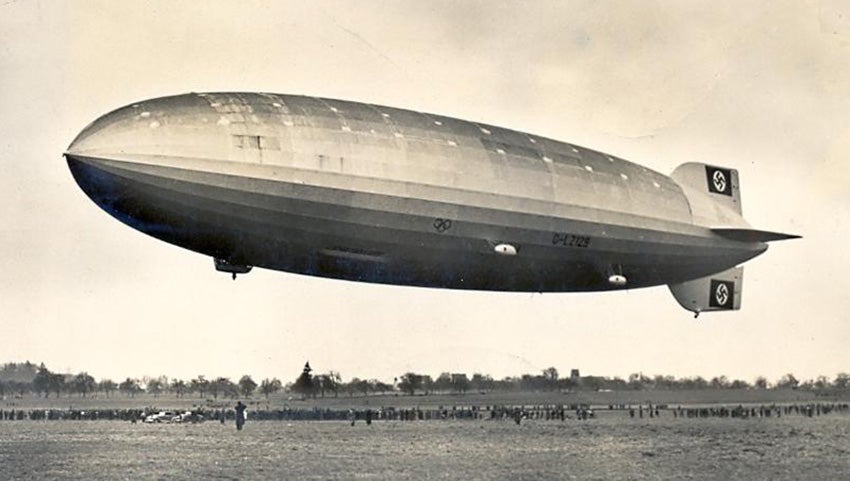 !!!CAPTION ERROR: MAY BE MULTI-LINE OR CONTAIN LINK!!!
!!!CAPTION ERROR: MAY BE MULTI-LINE OR CONTAIN LINK!!!
Hindenburg was originally built to be filled with helium, but helium was rare and came at an exorbitant cost. The only source was the United States, where helium was a byproduct of natural gas mining. Construction of Hindenburg went ahead regardless, and when the US refused to lift its export ban on helium, Hindenburg’s designers made the fateful decision to switch to highly flammable hydrogen instead, even though the dangers of hydrogen were well known. Hindenburg’s first commercial flight took place on March 31, 1935, and the first of 17 transatlantic flights culminated in Lakehurst, New Jersey on May 6, 1936. Two months later, Hindenburg made a record double crossing of the Atlantic in just under six days. But despite its unparalleled speed and size, Hindenburg would become most famous not for setting records, but for the devastating crash that marked its final flight.
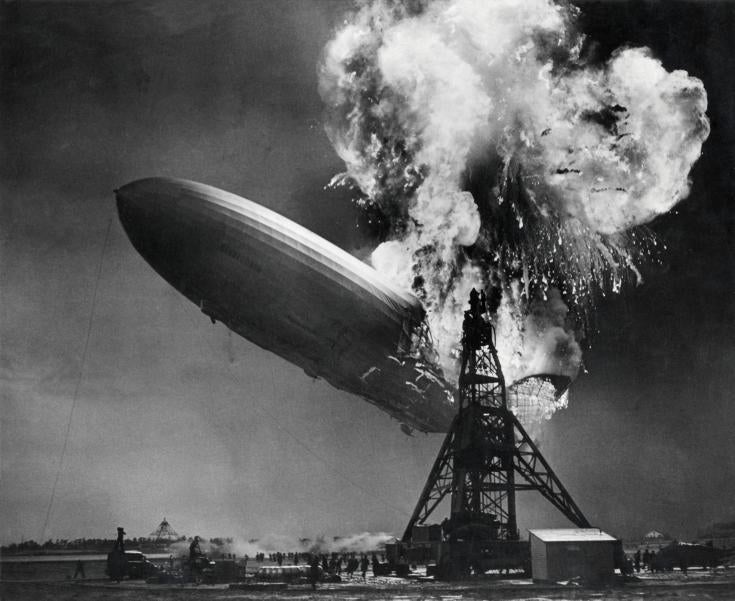 !!!CAPTION ERROR: MAY BE MULTI-LINE OR CONTAIN LINK!!!
!!!CAPTION ERROR: MAY BE MULTI-LINE OR CONTAIN LINK!!!
Hindenburg
left Frankfurt on May 6, 1937 on a transatlantic crossing to Lakehurst. It’s arrival was initially delayed by a line of thunderstorms, but the Zeppelin was finally cleared to land at about 7:00 pm. Twenty-one minutes later, shortly after dropping mooring lines to the ground crew,
Hindenburg
suddenly erupted into flames and crashed. In less than thirty seconds, the massive airship was reduced to a smoldering wreck of twisted, charred metal. Thirteen of the 36 passengers died, along with 22 members of the crew of 61 along with one man on the ground. The cause of the crash remains a topic of much conjecture even to this day, and no exact cause has ever been determined. Some suspect sabotage, others suggest atmospheric conditions related to the thunderstorms in the area. One of the more plausible theories is that hydrogen gas leaking from one of the cells was ignited by static electricity. After the crash, the duralumin hulk was returned to Germany and recycled for use in the construction of Luftwaffe aircraft.
!!!error: Indecipherable SUB-paragraph formatting!!!
(LZ 130)
,
Hindenburg’s
sister ship and the last great Zeppelin built by Germany, was scrapped in 1940 before its completion, and its duralumin frame was also melted down to be used for airplanes.
!!! UNKNOWN CONTENT TYPE !!!

Meteor F.3s with original short engine nacelles (UK Government photo)
March 5, 1943 – The first flight of the Gloster Meteor. When the Wright Flyer took to the skies of Kitty Hawk, North Carolina in 1903, it was powered by a homebuilt 4-cylinder engine that generated 12 horsepower and turned a wooden propeller. Over the ensuing years, engines became more powerful, !!!error: Indecipherable SUB-paragraph formatting!!! and radial engines were introduced, and the piston-powered propeller plane reached its zenith by the late stages of WWII. But the years before the war also witnessed the development of an entirely new powerplant, one that would take the airplane from the Wright Brother’s six miles per hour to beyond the speed of sound. As England’s first operational jet fighter, the Gloster Meteor is inextricably linked to the story of the jet engine.
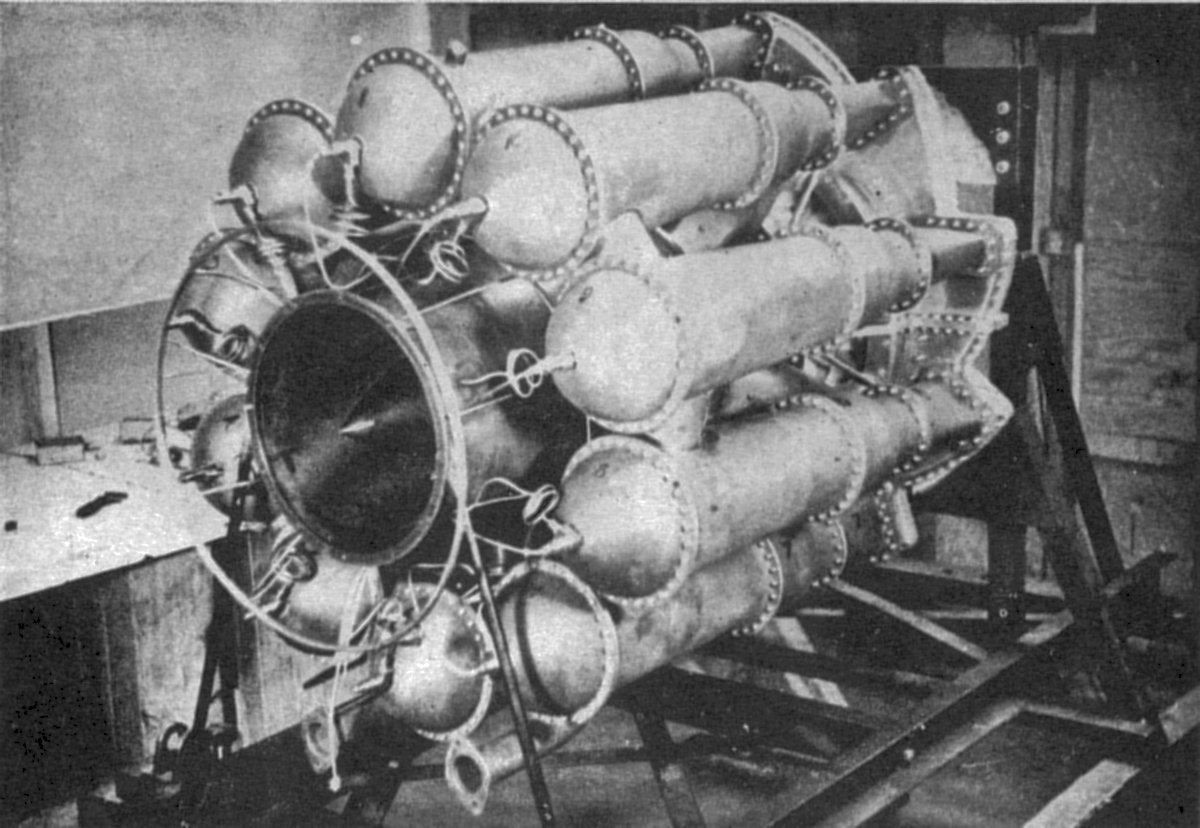 !!!CAPTION ERROR: MAY BE MULTI-LINE OR CONTAIN LINK!!!
!!!CAPTION ERROR: MAY BE MULTI-LINE OR CONTAIN LINK!!!
With the arrival of operational jet fighters late in WWII, the development of the turbojet engine is often associated with that conflict. However, the origins of the jet engine can be traced back to well before the war began. The Germans fielded the first operational jet fighter with the !!!error: Indecipherable SUB-paragraph formatting!!! , but work on a jet engine in England had begun by the late 1920s. Royal Air Force engineer !!!error: Indecipherable SUB-paragraph formatting!!! had been working on the principle of a !!!error: Indecipherable SUB-paragraph formatting!!! , where a piston engine is used to drive a compressor. Whittle’s breakthrough came when he thought of replacing the piston engine of the motorjet with a turbine, and he patented his first design in 1930. By 1936, he had formed his own company, !!!error: Indecipherable SUB-paragraph formatting!!! , to continue work on his concepts. Though he found it difficult to find financial backers for his project, and hard to find anybody to build a plane to test the new engine, Whittle eventually visited the !!!error: Indecipherable SUB-paragraph formatting!!! in 1939. There he met Gloster’s chief engineer, !!!error: Indecipherable SUB-paragraph formatting!!! , who took an interest in Whittle’s engine and began work on an aircraft design in which to implement the turbojet. The first proof of concept aircraft was the !!!error: Indecipherable SUB-paragraph formatting!!! , a single-engine aircraft that took its maiden flight on May 15, 1941.
 !!!CAPTION ERROR: MAY BE MULTI-LINE OR CONTAIN LINK!!!
!!!CAPTION ERROR: MAY BE MULTI-LINE OR CONTAIN LINK!!!
With proof that the turbojet worked, Gloster moved ahead with work on a production fighter, but decided to use two engines to make up for the lack of power in the early turbojet. By 1940, Carter had the first proposal for the twin-engine Meteor fighter, and within six months Gloster received an order for eight prototypes under Specification F9/40, which was written to match the fighter already in development. The Meteor was built in a modular fashion from five main sections: nose, forward fuselage, central section, rear fuselage, and tail sections. Various companies were contracted to build the modules, and this allowed production to be dispersed. It also facilitated disassembly and transport of the Meteor.
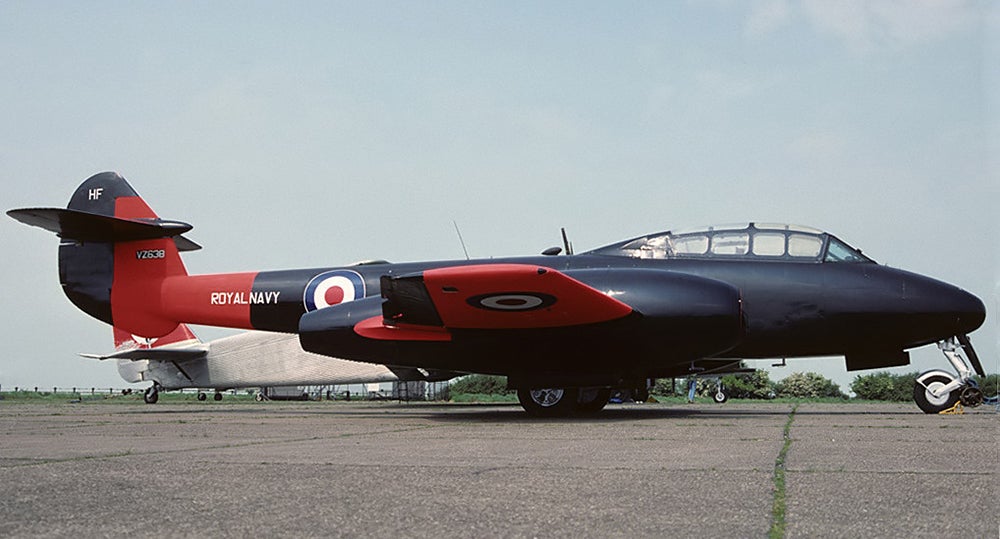 !!!CAPTION ERROR: MAY BE MULTI-LINE OR CONTAIN LINK!!!
!!!CAPTION ERROR: MAY BE MULTI-LINE OR CONTAIN LINK!!!
Following testing, the Meteor was introduced on July 27 1944, with the first aircraft delivered to No. 616 Squadron of the RAF. With a top speed of 600 mph, 100 mph faster than the !!!error: Indecipherable SUB-paragraph formatting!!! , the Meteor was first flown against the German !!!error: Indecipherable SUB-paragraph formatting!!! that were terrorizing England. On August 4, 1944, Meteor pilots claimed their first victories when they shot down two V-1s, and they eventually claimed 14 “buzz bombs” by the end of the war. At first, Meteors were forbidden from flying over German-held territory for fear that one of the fighters would fall into enemy hands. But when the V-1 threat subsided, Meteors finally were sent to Europe in January of 1945. But a clash between the Meteor and the Me 262 never occurred.
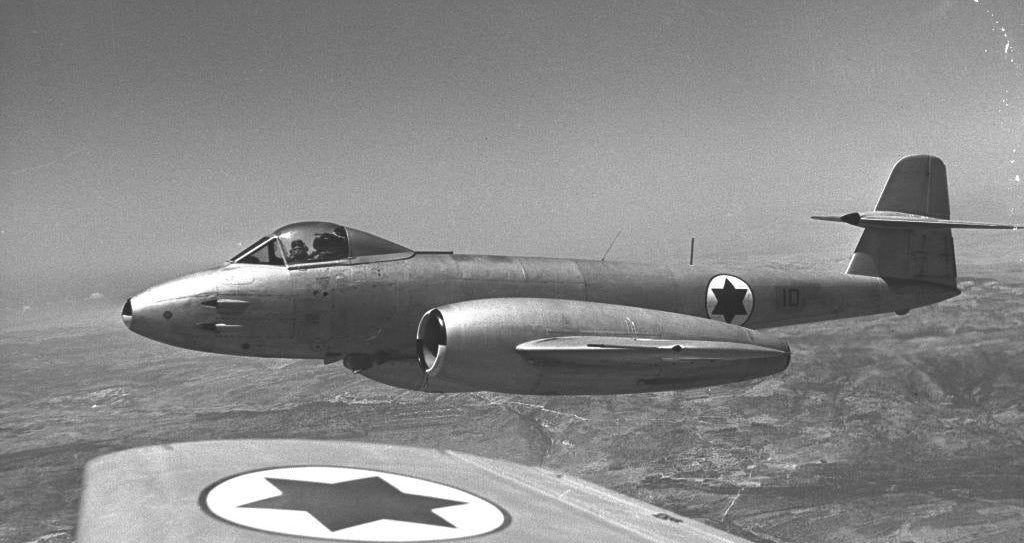 !!!CAPTION ERROR: MAY BE MULTI-LINE OR CONTAIN LINK!!!
!!!CAPTION ERROR: MAY BE MULTI-LINE OR CONTAIN LINK!!!
Production and development of the Meteor continued after the war, with improvements made in the design, fuel capacity, radar and weapons systems, as well as the development of a two-seat trainer version. F8 Meteors flying with the Royal Australian Air Force saw significant action during the Korean War. Nearly 4,000 Meteors were built by the time production ended in 1955, and they were widely exported. Meteors also served as testbeds for engine development, and the first turboprop-powered aircraft to fly was a Meteor outfitted with turboprop engines. British Meteors ended their days with the RAF as target tugs, flying into the 1980s and, despite their retirement, Meteors are still providing useful service today. The !!!error: Indecipherable SUB-paragraph formatting!!! , pioneers in ejection seat technology, !!!error: Indecipherable SUB-paragraph formatting!!! a pair of Meteors to perform flight tests of the latest ejection seats.
!!! UNKNOWN CONTENT TYPE !!!
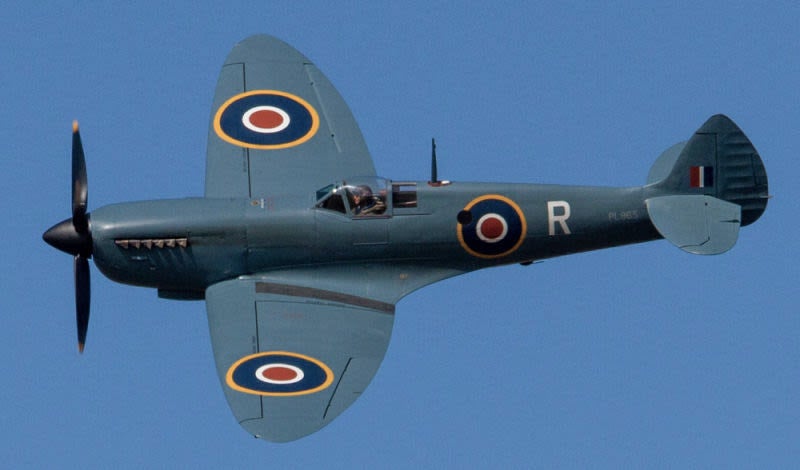 !!!CAPTION ERROR: MAY BE MULTI-LINE OR CONTAIN LINK!!!
!!!CAPTION ERROR: MAY BE MULTI-LINE OR CONTAIN LINK!!!
March 5, 1936 – The first flight of the Supermarine Spitfire. The years between World War I and World War II is known as the !!!error: Indecipherable SUB-paragraph formatting!!! , a period marked by rapid advances in aircraft design and construction. Aviation grew from the sole purview of the military to include civilian pilots, air races became a world phenomenon, and prestigious trophies and prize purses became a driving force behind significant advances in speed and aerodynamic design. !!!error: Indecipherable SUB-paragraph formatting!!! had made a name for itself building racing seaplanes, and had won the !!!error: Indecipherable SUB-paragraph formatting!!! three times between 1927-1931. With the prospect of war looming in Europe by the mid-1930s, the Royal Air Force turned to the Woolston-based company to develop a new fighter that could intercept and defeat faster, more advanced German aircraft.
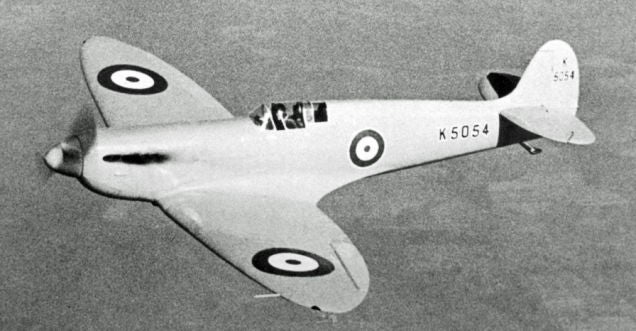
The Spitfire prototype (Author unknown)
Drawing on experience from their racing days, Supermarine first developed the !!!error: Indecipherable SUB-paragraph formatting!!! , a monoplane with fixed landing gear and an open cockpit. But problems with the !!!error: Indecipherable SUB-paragraph formatting!!! engine, coupled with poor performance, led Supermarine to abandon the Type 224 for a still more modern design. What followed was the Type 300, which underwent significant subsequent development to include an enclosed cockpit, retractable landing gear, smaller wings, and an oxygen supply for the pilot. Supermarine designer !!!error: Indecipherable SUB-paragraph formatting!!! also gave the the new fighter what would become one of the Spitfire’s most recognizable features: its graceful elliptical wing, with an exceptionally thin cross section that helped increase the Spitfire’s top speed. But most importantly, Supermarine settled on the Rolls-Royce PV-12 engine, the precursor to the mighty !!!error: Indecipherable SUB-paragraph formatting!!! . The Spitfire was an immediate winner. Upon landing after the first flight of the prototype, Vickers chief test pilot !!!error: Indecipherable SUB-paragraph formatting!!! reportedly said, “Don’t touch anything.”
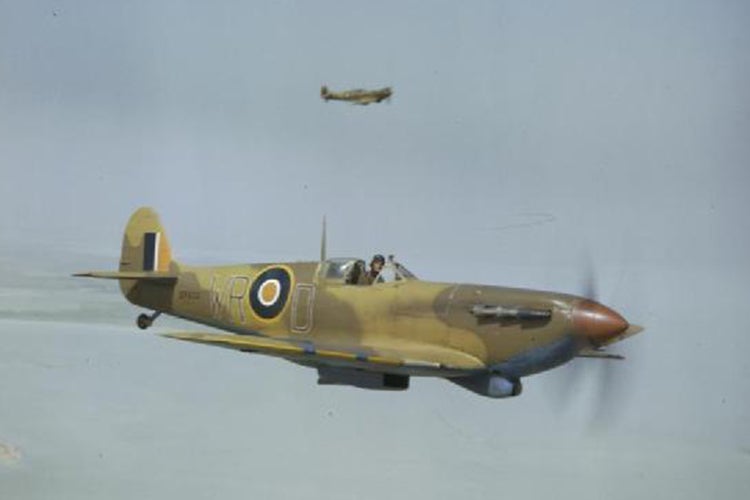 !!!CAPTION ERROR: MAY BE MULTI-LINE OR CONTAIN LINK!!!
!!!CAPTION ERROR: MAY BE MULTI-LINE OR CONTAIN LINK!!!
Though the Spitfire was well-received, its Merlin engine was not without its teething problems. Unlike the fuel injected engines in use by the Luftwaffe, the Merlin had a carburetor. This made the Spitfire susceptible to flooding in a nose-over dive or inverted flight. At first, pilots learned to combat this problem by first half-rolling the aircraft before a dive. But until a permanent solution could be found with the addition of a pressurized carburetor, it was !!!error: Indecipherable SUB-paragraph formatting!!! who saved the day. Shilling devised a restrictor, nicknamed !!!error: Indecipherable SUB-paragraph formatting!!! , that restricted the flow of fuel to no more than the engine could use at full power. While only a stopgap measure, the restrictor kept the Spitfire flying until the new carburetors could be developed. In the final round of Spitfire production, the Merlin gave way to the !!!error: Indecipherable SUB-paragraph formatting!!! which employed a pressure-injection carburetor and boasted 2,340 hp and a top speed of nearly 500 mph.
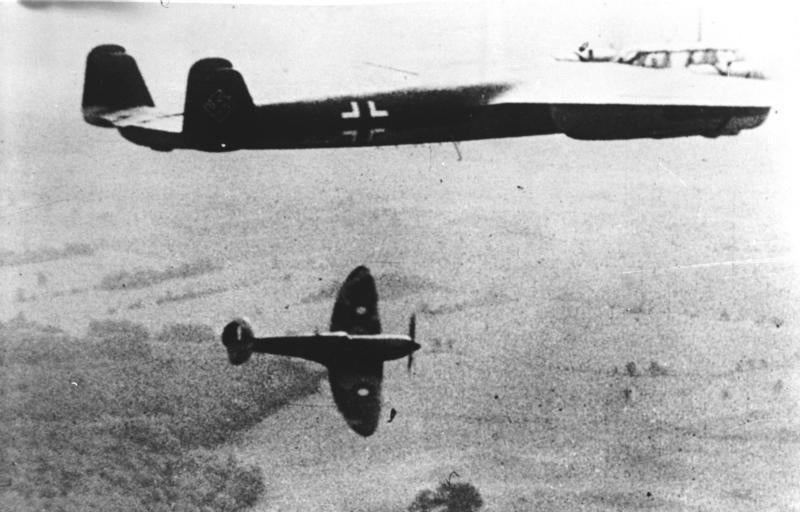 !!!CAPTION ERROR: MAY BE MULTI-LINE OR CONTAIN LINK!!!
!!!CAPTION ERROR: MAY BE MULTI-LINE OR CONTAIN LINK!!!
During the !!!error: Indecipherable SUB-paragraph formatting!!! , Spitfire pilots and their comrades flying the !!!error: Indecipherable SUB-paragraph formatting!!! faced the onslaught of the Luftwaffe. Though the less glamorous Hurricane fought in greater numbers, the Spitfire became the better known fighter of the battle, as dashing RAF fighter pilots in the “Spits” dueled with German fighters high in the sky while the “Hurrys,” which were no match for the !!!error: Indecipherable SUB-paragraph formatting!!! , slugged it out with the bombers at lower altitudes. Head to head with the Me 109, the Spitfire pilot appreciated the firepower provided by eight Browning .303 machine guns. While not as powerful as the canon used by the Germans, Spitfire pilots could concentrate more firepower on the enemy.
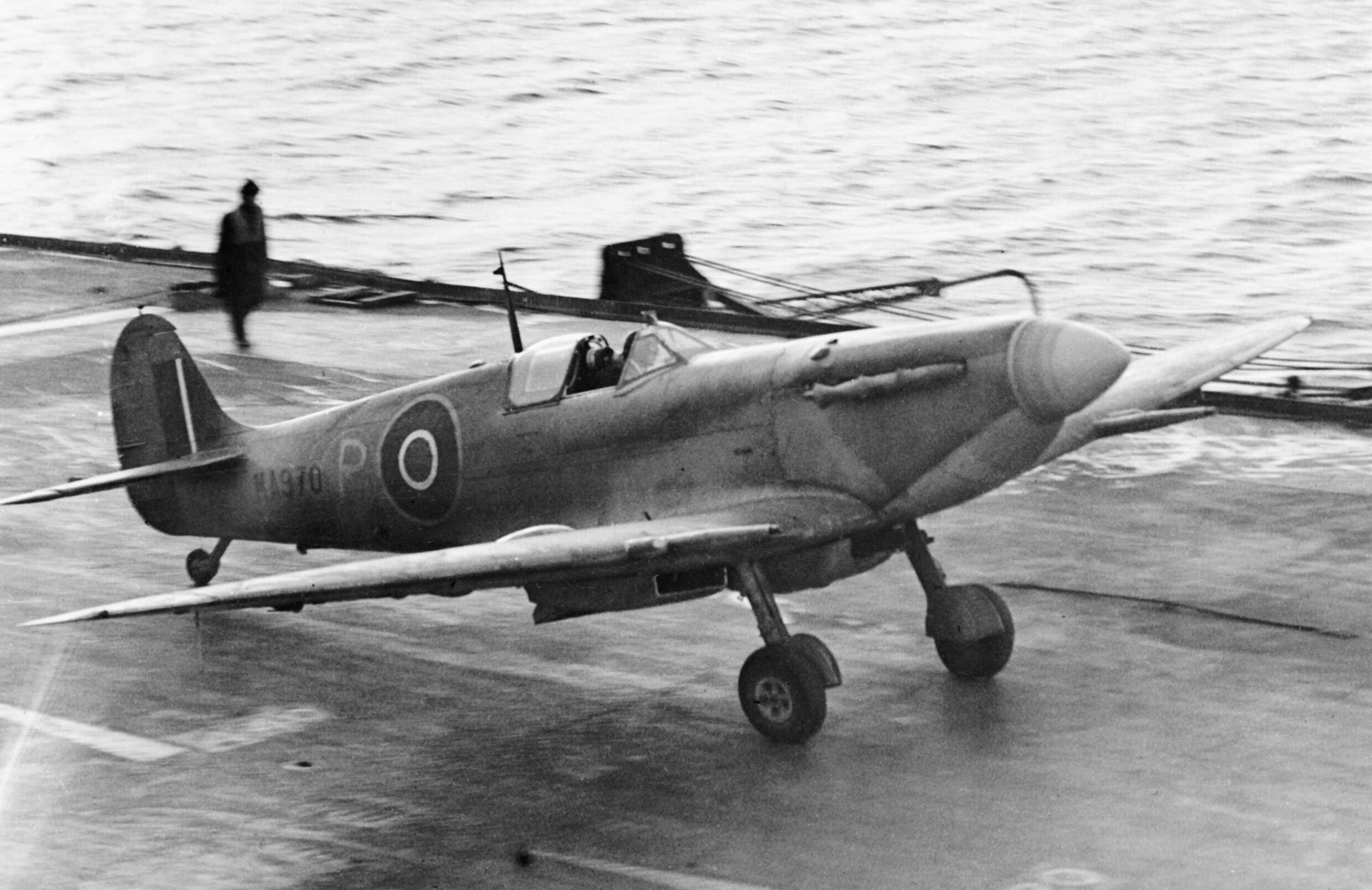 !!!CAPTION ERROR: MAY BE MULTI-LINE OR CONTAIN LINK!!!
!!!CAPTION ERROR: MAY BE MULTI-LINE OR CONTAIN LINK!!!
The Spitfire was continuously improved and produced throughout the war. Supermarine developed numerous variants, including a carrier-based version which was nicknamed the !!!error: Indecipherable SUB-paragraph formatting!!! , and export Spitfires were flown by 35 countries around the world. The mission of the Spitfire didn’t end with VE Day. They continued patrolling German skies after the war, Spitfire pilots flew over 1,800 sorties during the !!!error: Indecipherable SUB-paragraph formatting!!! , and the final operational sortie flown by the Spitfire took place on April 1, 1954. In all, more than 20,000 Spits were produced from 1938-1948, making it the third-highest produced warplane behind the !!!error: Indecipherable SUB-paragraph formatting!!! (36,183) and the Bf 109 (34,852).
!!! UNKNOWN CONTENT TYPE !!!
!!! UNKNOWN CONTENT TYPE !!!
Short Takeoff
!!! UNKNOWN CONTENT TYPE !!!
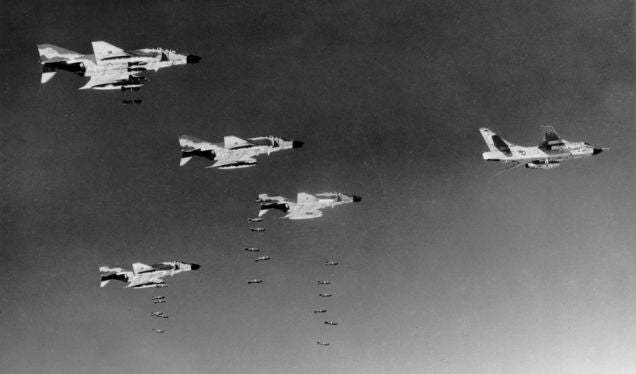
(US Air Force)
March 2, 1965 – The start of Operation Rolling Thunder, a sustained campaign of aerial bombardment against North Vietnam that lasted more than three years. US military planners hoped the bombings would boost South Vietnamese morale, stop the North Vietnamese government from its support of Communist rebels in the south, destroy the transportation system of North Vietnam, and prevent the flow of war materiel into the south. American and South Vietnamese aircraft faced dogged and sophisticated resistance to the attacks, and over 900 aircraft were lost. The US Air Force suffered the death of 255 pilots with 222 captured, while the US Navy and Marine Corps casualties totaled 454 pilots killed, captured or missing. Despite 864,000 tons of bombs dropped over the course of 300,000 sorties, Rolling Thunder was ultimately unsuccessful.
!!! UNKNOWN CONTENT TYPE !!!
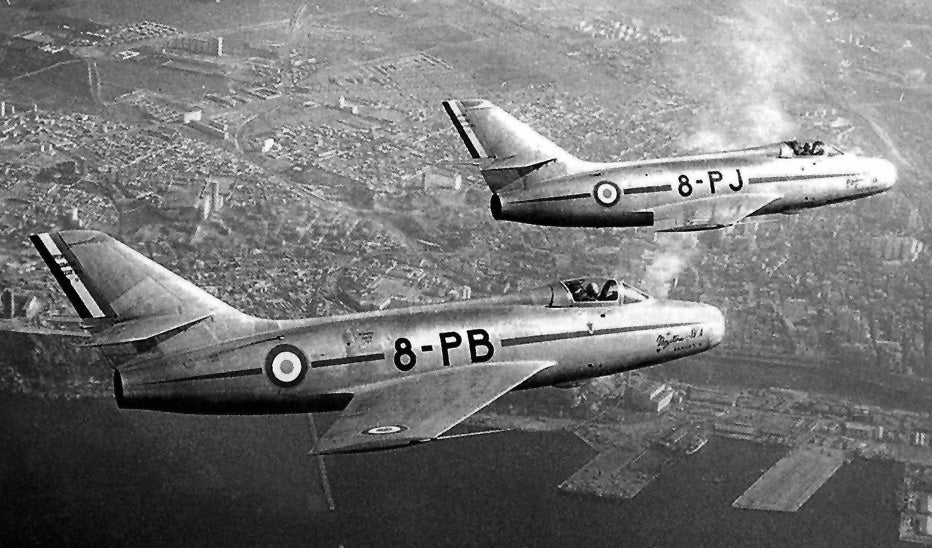 !!!CAPTION ERROR: MAY BE MULTI-LINE OR CONTAIN LINK!!!
!!!CAPTION ERROR: MAY BE MULTI-LINE OR CONTAIN LINK!!!
March 2, 1955 – The first flight of the Dassault Super Mystère, a French-built fighter-bomber and the first Western European supersonic aircraft to enter mass production. The Super Mystère is the ultimate evolution of the !!!error: Indecipherable SUB-paragraph formatting!!! , which had in turn been developed into the !!!error: Indecipherable SUB-paragraph formatting!!! and !!!error: Indecipherable SUB-paragraph formatting!!! . The Super Mystère was the first in the series to achieve supersonic speeds in level flight. Following its introduction in 1957, the Super Mystère served with the French Armée de l’Air until its retirement in 1977. It was also exported to Honduras and Israel, where it saw action in the !!!error: Indecipherable SUB-paragraph formatting!!! and the !!!error: Indecipherable SUB-paragraph formatting!!! . A total of 180 aircraft were built.
!!! UNKNOWN CONTENT TYPE !!!
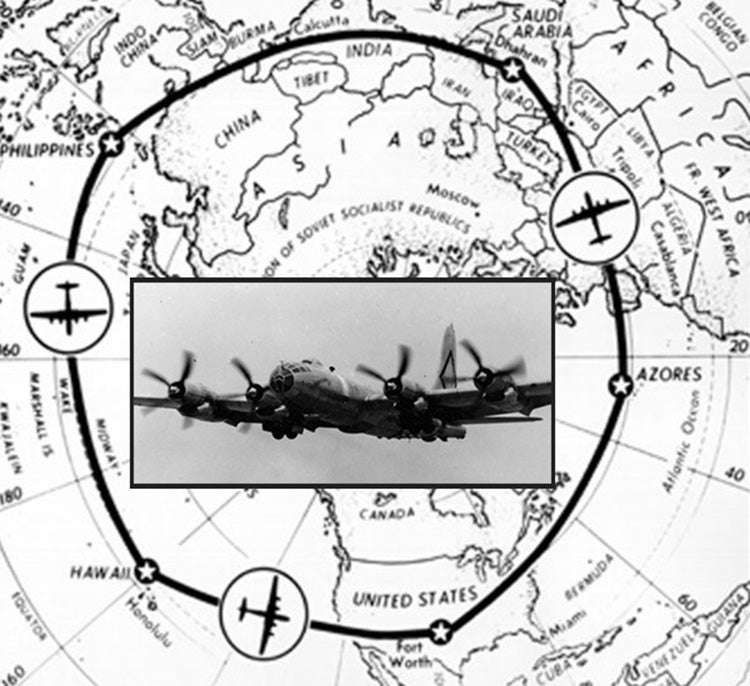
(US Air Force)
March 2, 1949 – The crew of Lucky Lady II completes the first non-stop circumnavigation of the globe. Lucky Lady II was a US Air Force !!!error: Indecipherable SUB-paragraph formatting!!! belonging to the 43rd Bombardment Group. At the time of its round-the-world flight, the strategic bomber still had all of its defensive armament, though the bomb bay had been fitted with an additional fuel tank. Lucky Lady II departed from Carswell AFB in Texas on February 26 on an easterly route and was refueled by aerial tankers four times during a 94-hour flight that covered 23,452 miles. Two crews took turns flying six-hour shifts. For their roles in the mission, each member of the crew was awarded the !!!error: Indecipherable SUB-paragraph formatting!!! .
!!! UNKNOWN CONTENT TYPE !!!
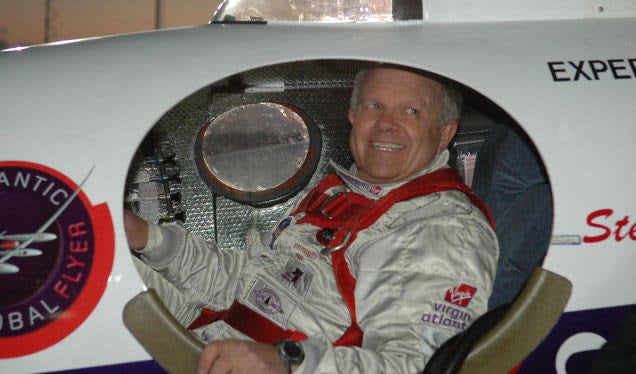
(NASA)
March 3, 2005 – Steve Fossett completes the first nonstop solo circumnavigation of the Earth. Millionaire adventurer !!!error: Indecipherable SUB-paragraph formatting!!! took off from Salina, Kansas on February 28, 2005 in the !!!error: Indecipherable SUB-paragraph formatting!!! , an aircraft designed by !!!error: Indecipherable SUB-paragraph formatting!!! and built by Rutan’s company !!!error: Indecipherable SUB-paragraph formatting!!! . The twin-boom aircraft was built from carbon fiber reinforced plastic and powered by a single !!!error: Indecipherable SUB-paragraph formatting!!! turbofan engine. Fossett flew eastward from Kansas at an average speed of 342.2 mph and returned to his starting point slightly more than 67 hours and 22,936 miles later to claim the absolute record for “speed around the world, nonstop and non-refueled.” The following year, Fossett piloted the GlobalFlyer 25,766 miles nonstop to set the world’s record for the greatest unrefueled distance ever traveled in an aircraft.
!!! UNKNOWN CONTENT TYPE !!!
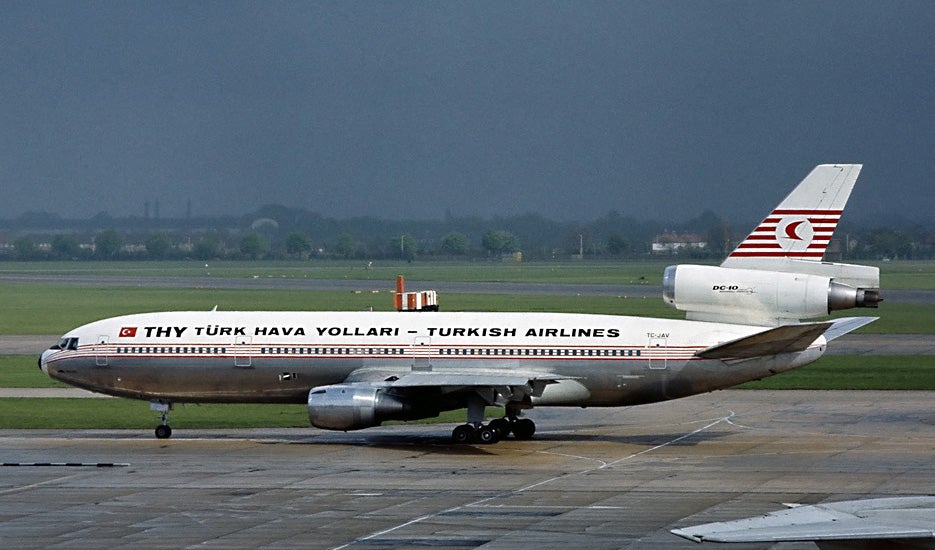 !!!CAPTION ERROR: MAY BE MULTI-LINE OR CONTAIN LINK!!!
!!!CAPTION ERROR: MAY BE MULTI-LINE OR CONTAIN LINK!!!
March 3, 1974 – The crash of Turkish Airlines Flight 981. Turkish Airlines Flight 981 was regularly scheduled McDonnell Douglas DC-10 (TC-JAV) service between Istanbul to London Heathrow that crashed when an improperly closed cargo hatch blew open at approximately 23,000 feet. When the door broke free, it caused an explosive decompression of the cabin and severed the control cables to the airliner’s tail and number two engine. All 346 passengers and crew were killed when the airliner crashed into the Ermenonville Forest in France, making it the world’s deadliest aviation crash to date. Following a similar door failure two years before on an American Airlines DC-10 that landed safely, it was discovered that flaws in the design of the door could make it appear that the door was closed properly when in fact it wasn’t. Insurance company investigators also discovered that ground crew personnel in Turkey had ground locking pins down in an effort to get the door to close. After settling in court with the victims of the crash, McDonnell Douglas completely redesigned the cargo door, and the Federal Aviation Administration mandated that similar changes be made to outward-opening cargo doors on other large airliners.
!!! UNKNOWN CONTENT TYPE !!!
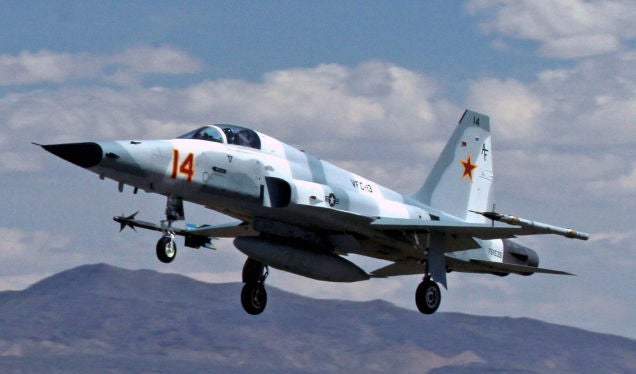
(US Navy)
March 3, 1969 – The US Navy establishes the Fighter Weapons School at NAS Miramar, popularly known as TOPGUN. In 1968, the US Navy published the !!!error: Indecipherable SUB-paragraph formatting!!! , a review of Navy air-to-air missile system capabilities from 1965-1968, a period when US pilots suffered high losses during the !!!error: Indecipherable SUB-paragraph formatting!!! campaign. Rather than place the blame for American aircraft losses entirely on early air-to-air missiles or missile systems, the Ault report recommended that an Advanced Fighter Weapons School be created to re-educate pilots in air combat maneuvering (ACM, or dogfighting), skills that had languished after the US started to rely solely on guided missiles. Select Naval Aviators and flight officers are sent to train at Topgun, then return to their operational units to share what they learned. In 1996, Topgun was merged into the !!!error: Indecipherable SUB-paragraph formatting!!! at NAS Fallon in Nevada.
!!! UNKNOWN CONTENT TYPE !!!
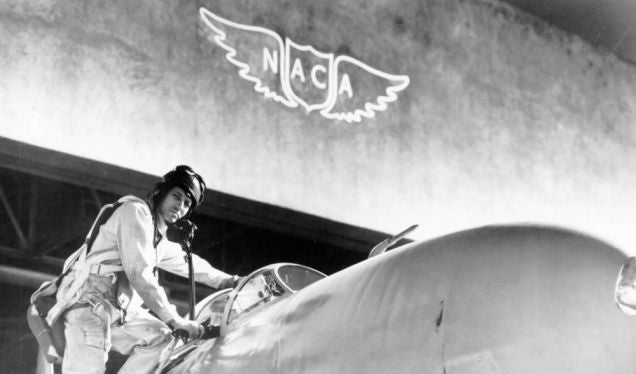
(NASA)
March 3, 1915 – The National Advisory Committee for Aeronautics is created to promote the technological development of aviation in the United States. NACA was at the forefront of some of the most important advances in aircraft design, such as the !!!error: Indecipherable SUB-paragraph formatting!!! , which improved aerodynamics of radial engines and increased fuel efficiency, the !!!error: Indecipherable SUB-paragraph formatting!!! , which was an aerodynamic air intake used on jet aircraft, and the !!!error: Indecipherable SUB-paragraph formatting!!! which maximized air pressure both above and below the wing. NACA took the lead in the development of advanced jet aircraft in the period immediately following WWII, and was responsible for many of the significant advances made in speed and altitude. Orville Wright served on the board for 28 years. With the beginning of the American space program, NACA was dissolved and its assets were transferred to the fledgling !!!error: Indecipherable SUB-paragraph formatting!!! (NASA) in 1958.
!!! UNKNOWN CONTENT TYPE !!!
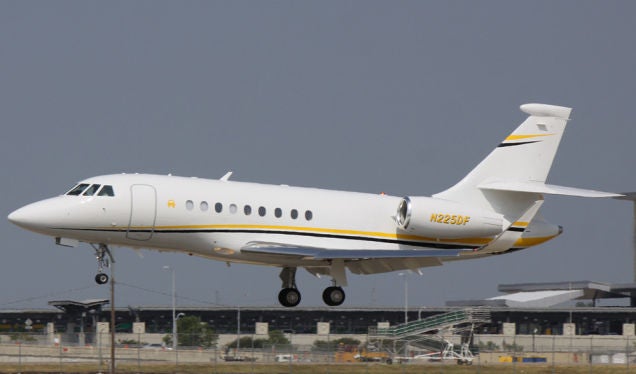
(Tim Shaffer)
March 4, 1993 – The first flight of the Dassault Falcon 2000, a business jet developed by the French company !!!error: Indecipherable SUB-paragraph formatting!!! as a smaller variant of the !!!error: Indecipherable SUB-paragraph formatting!!! . Though the 2000 has only two engines compared to the 900's three engines, it still possesses intercontinental range. Continued development of the 2000 has brought increased fuel efficiency, extended range, and short runway capability. Dassault has also proposed a maritime reconnaissance version and, in addition to its civilian operators, the 2000 is currently flown by the militaries of France, Bulgaria, Slovenia and the Republic of Korea. The 2000 is powered by two !!!error: Indecipherable SUB-paragraph formatting!!! turbofans and is capable of speeds of Mach 0.85 with a range of up to 6,000 nautical miles.
!!! UNKNOWN CONTENT TYPE !!!
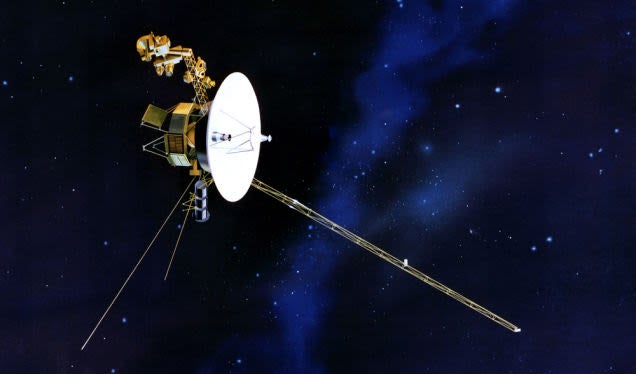
(NASA)
March 5, 1979 – Voyager 1 makes its closest approach to Jupiter. !!!error: Indecipherable SUB-paragraph formatting!!! was sent to space on September 5, 1977 on a mission to study the outer solar system. Launched 16 days after !!!error: Indecipherable SUB-paragraph formatting!!! , Voyager 1 has operated for more than 38 years and continues to return data to Earth. After close flybys of Jupiter, Saturn and Saturn’s moon Titan, Voyager 1 continued to the boundaries of the outer !!!error: Indecipherable SUB-paragraph formatting!!! and, on August 25, 2012, it became the first spacecraft to enter interstellar space. Voyager will continue functioning until its batteries run out in 2025.
!!! UNKNOWN CONTENT TYPE !!!
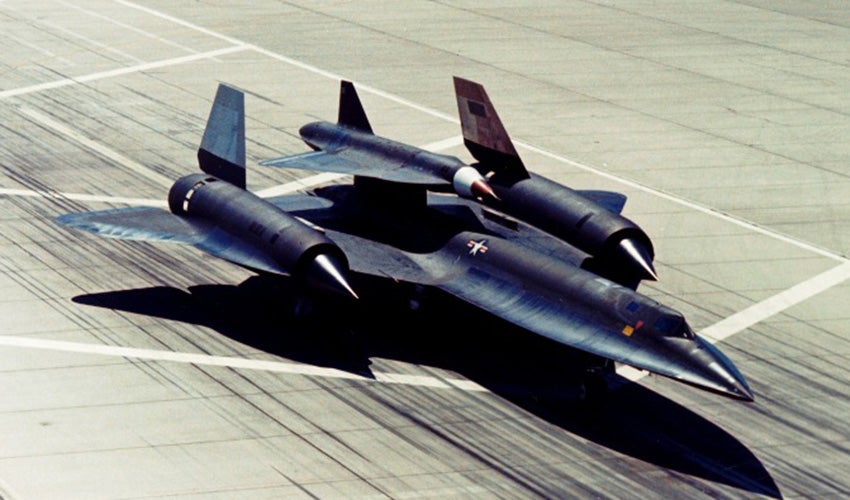
(US Air Force)
March 5, 1966 – The first free flight of the Lockheed D-21 reconnaissance drone. When !!!error: Indecipherable SUB-paragraph formatting!!! pilot !!!error: Indecipherable SUB-paragraph formatting!!! was shot down over the Soviet Union, work began on an unmanned system that could do dangerous reconnaissance work without putting a pilot at risk. The D-21 drone was inspired by the design of the !!!error: Indecipherable SUB-paragraph formatting!!! , and was intended to be launched from the back of a modified A-12 known as the M-21. Captive flight tests of the drone and M-21 began in December 1964, followed by three release flights. On the fourth flight, the D-21's engine malfunctioned, and the drone struck the vertical stabilizer of the M-21 causing both aircraft to crash. One member of the M-21's two-man crew was killed. Lockheed modified the D-21 to launch from under the wing of a !!!error: Indecipherable SUB-paragraph formatting!!! , and four reconnaissance missions were carried out over China, but all ended in failure, either with the malfunction of the D-21 or with the loss of the film that had been ejected from the drone. The D-21 project was canceled in 1973.
!!! UNKNOWN CONTENT TYPE !!!
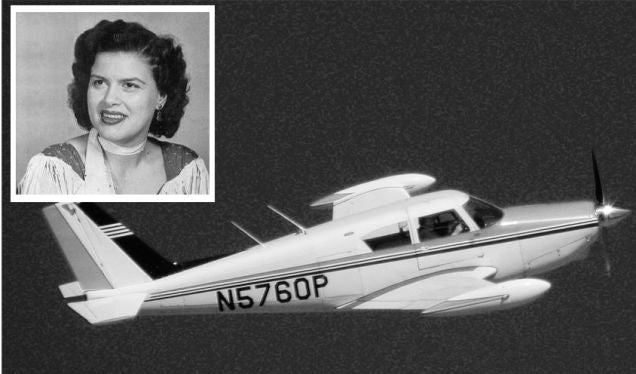 !!!CAPTION ERROR: MAY BE MULTI-LINE OR CONTAIN LINK!!!
!!!CAPTION ERROR: MAY BE MULTI-LINE OR CONTAIN LINK!!!
March 5, 1963 – A plane crash claims the life of country music singer Patsy Cline. Following a benefit concert in Kansas City, Kansas, Cline was unable to leave following the show because the local airport was fogged in. She declined an offer of a car ride to Nashville, and instead opted to fly out the next day. Cline boarded a !!!error: Indecipherable SUB-paragraph formatting!!! (N-7000P) for the flight to Nashville and, after a stop for fuel in Dyersburg, Tennessee, the pilot chose to continue despite worsening weather, even though he was not qualified for instrument flying ( !!!error: Indecipherable SUB-paragraph formatting!!! ). The Comanche crashed 90 miles from Nashville, and the NTSB report cited the pilot’s loss of control in adverse conditions as the cause. Along with Cline, musicians !!!error: Indecipherable SUB-paragraph formatting!!! , !!!error: Indecipherable SUB-paragraph formatting!!! , and pilot Randy Hughes were killed.
!!! UNKNOWN CONTENT TYPE !!!
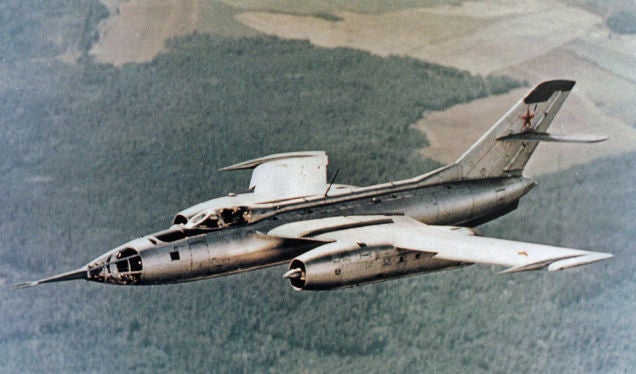
(Author unknown)
March 5, 1958 – The first flight of the Yakovlev Yak-28, a Cold War era tactical bomber produced by the Soviet Union. The Yak-28 was powered by two !!!error: Indecipherable SUB-paragraph formatting!!! afterburning turbojets mounted in pods beneath 45-degree swept wings. Though designed as a tactical bomber, the Yak-28 was also used for reconnaissance, electronic warfare, as an interceptor, and as a trainer. Its NATO reporting names— Brewer (jet bomber), Fireball (jet fighter), and Maestro (miscellaneous)—reflected the mission of the particular variant. The Yak-28 had a top speed of 735 mph and was armed with one or two 30mm cannons and up to 4,410 pounds of bombs and missiles. Following its introduction in 1960, the Yak-28 served the Soviet Union, Russia, Turkmenistan and Ukraine. Nearly 1,800 were produced.
!!! UNKNOWN CONTENT TYPE !!!
Connecting Flights
!!! UNKNOWN CONTENT TYPE !!!
!!! UNKNOWN CONTENT TYPE !!!
!!! UNKNOWN CONTENT TYPE !!!
!!! UNKNOWN CONTENT TYPE !!!
!!! UNKNOWN CONTENT TYPE !!!
If you enjoy these Aviation History posts, please let me know in the comments. And if you missed any of the past articles, you can find them all at
!!!error: Indecipherable SUB-paragraph formatting!!!
. You can also find more stories about aviation, aviators and airplane oddities at
!!!error: Indecipherable SUB-paragraph formatting!!!
.
!!! UNKNOWN CONTENT TYPE !!!
 facw
> ttyymmnn
facw
> ttyymmnn
03/05/2019 at 12:45 |
|
Busy half week.

 TheRealBicycleBuck
> ttyymmnn
TheRealBicycleBuck
> ttyymmnn
03/05/2019 at 13:02 |
|
Another excellent post! I didn’t know Patsy Cline died in a plane crash. There were a lot of other things I learned, but that’s the one that stuck out to me. I worry about flying into inclement weather conditions. I’ve already had a couple of aborted flights, one diverted flight, and one where we had to switch to IFR on our way back to the airport (IFR rating is required for instructors).
 InFierority Complex
> ttyymmnn
InFierority Complex
> ttyymmnn
03/05/2019 at 13:12 |
|
I’ve always loved the F-104 ever since I had a Micro Machines of one as a kid. It was just so unique from the rest of the fighters I’d seen. I think the first one I ever saw was down in a air museum in Pueblo, which also had a B-29.
It’s only within the past year or so that I learned about Fiat and later Aeritalia’s versions which made me love it even more.
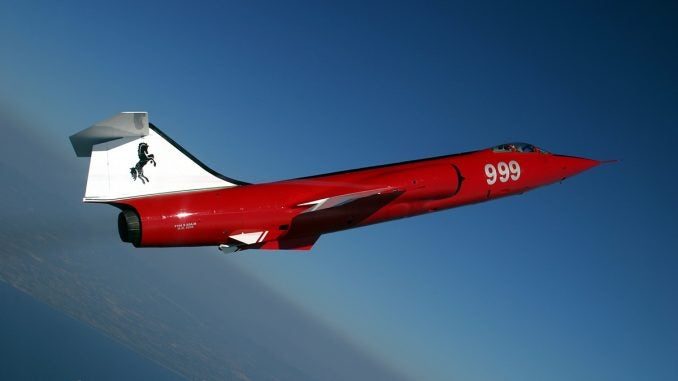
The Ducati livery with Baracca’s prancing horse might just be my favorite plane, ever.
 ttyymmnn
> TheRealBicycleBuck
ttyymmnn
> TheRealBicycleBuck
03/05/2019 at 13:14 |
|
Thanks. We’ve lost a lot of good people to plane crashes: Cline, Otis Redding, Richie Havens, the Big Bopper, Buddy Holly, Stevie Ray Vaughan, Lynyrd Skynyrd, Glen Miller, Bill Chase, Roberto Clemente, the list goes on and on. Of course, being an entertainer means lots of travel, and the more you fly the more you increase your risks. Still, lots of people seemed to be flying when they shouldn’t have been, especially back in the day.
In other news, I read that they have found the recorders from that 767 crash.
 ttyymmnn
> facw
ttyymmnn
> facw
03/05/2019 at 13:15 |
|
I was waiting for that 104 to crash. That maneuver took some balls. It seems like the weeks are either huge or nothing. I’ve got a post coming up later in the month with over 6,000 words.
 ttyymmnn
> InFierority Complex
ttyymmnn
> InFierority Complex
03/05/2019 at 13:18 |
|
That 999 Starfighter pic gets even better if you adjust for the horizon. Going up!!
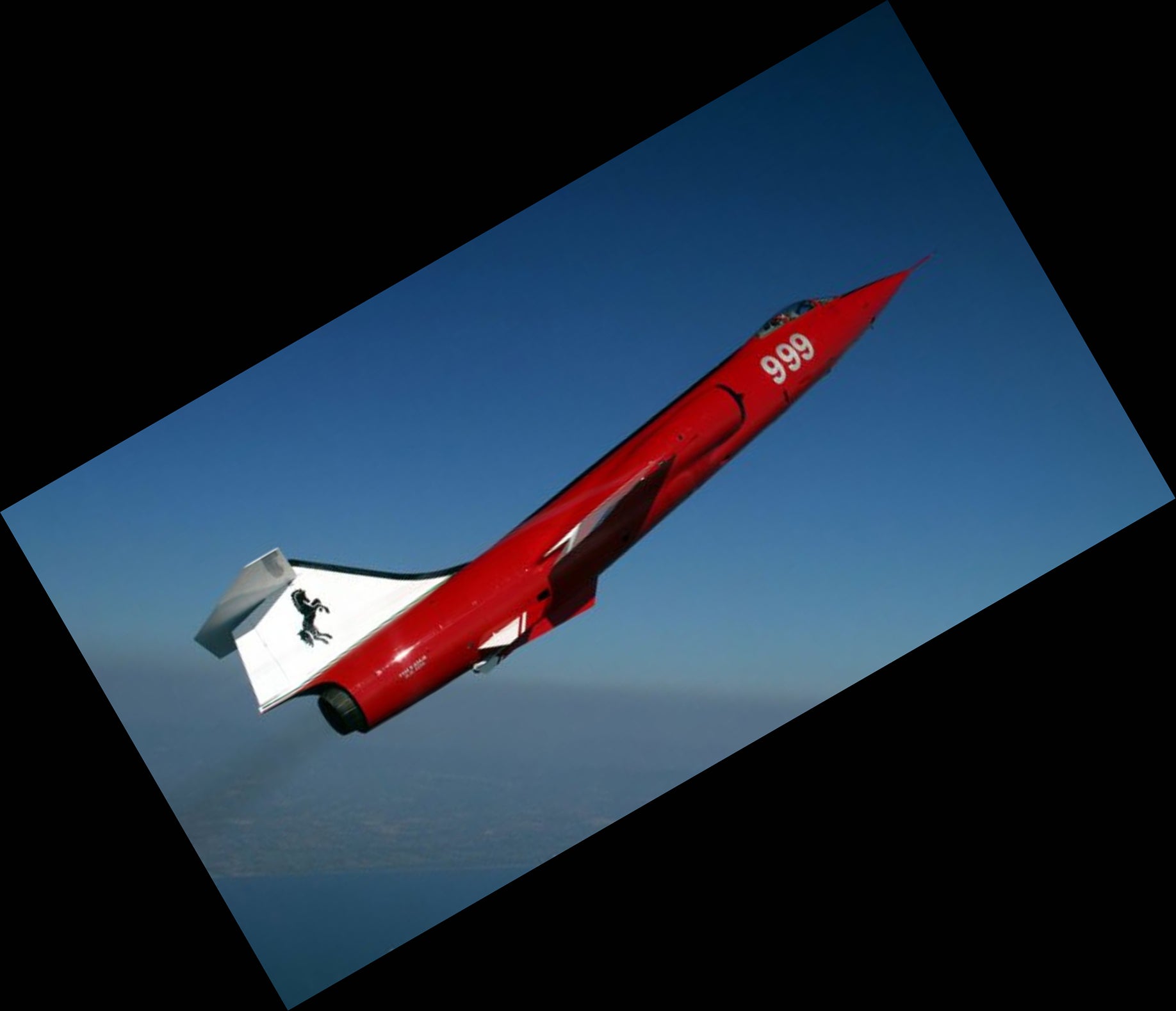
 facw
> ttyymmnn
facw
> ttyymmnn
03/05/2019 at 13:20 |
|
To be fair, IIRC, this trick was later banned because of a fatal crash. It’s an impressive feat for plane and pilot (especially since low-speed flying was really not the F-104's thing) , but it’s very close to the edge of what’s possible, with no margin for error.
 TheRealBicycleBuck
> ttyymmnn
TheRealBicycleBuck
> ttyymmnn
03/05/2019 at 13:22 |
|
We lost someone within three degrees of separation just last week. Let’s see if I can map this relationship. My wife -> wife’s cousin -> cousin’s daughter -> daughter’s father-in-law. I never met the fellow, but I do know his son.
He was flying out of Shreveport Downtown Airport and went down right after takeoff. There weren’t any witnesses that I know of, so I don’t know if it was a stall or an engine failure. https://www.klfy.com/news/local/plane-crashes-after-takeoff-from-louisiana-to-texas-2-aboard/1823100382
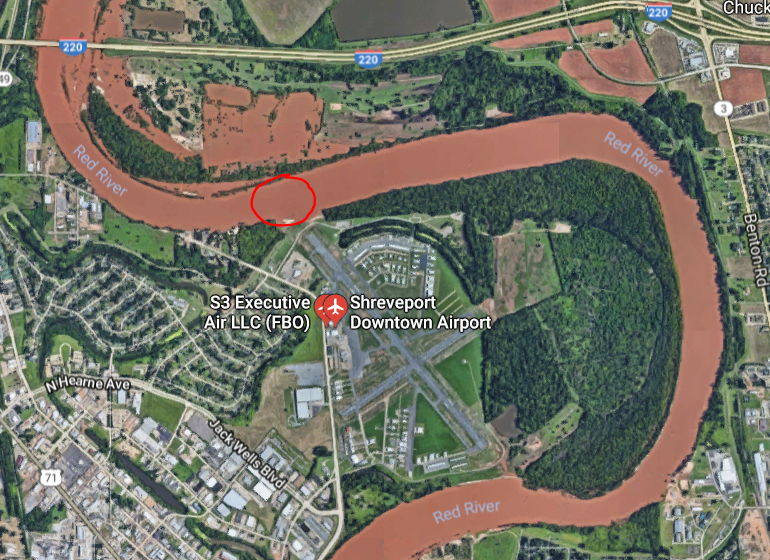
The plane was a Piper Malibu.
 RamblinRover Luxury-Yacht
> ttyymmnn
RamblinRover Luxury-Yacht
> ttyymmnn
03/05/2019 at 13:24 |
|
Offhand remark: at least one edition of the 1:72 Revell/Monogram SR-71 model kit has a D21 drone included.
 facw
> InFierority Complex
facw
> InFierority Complex
03/05/2019 at 13:53 |
|
I always liked seeing this one at Air & Space as a kid:
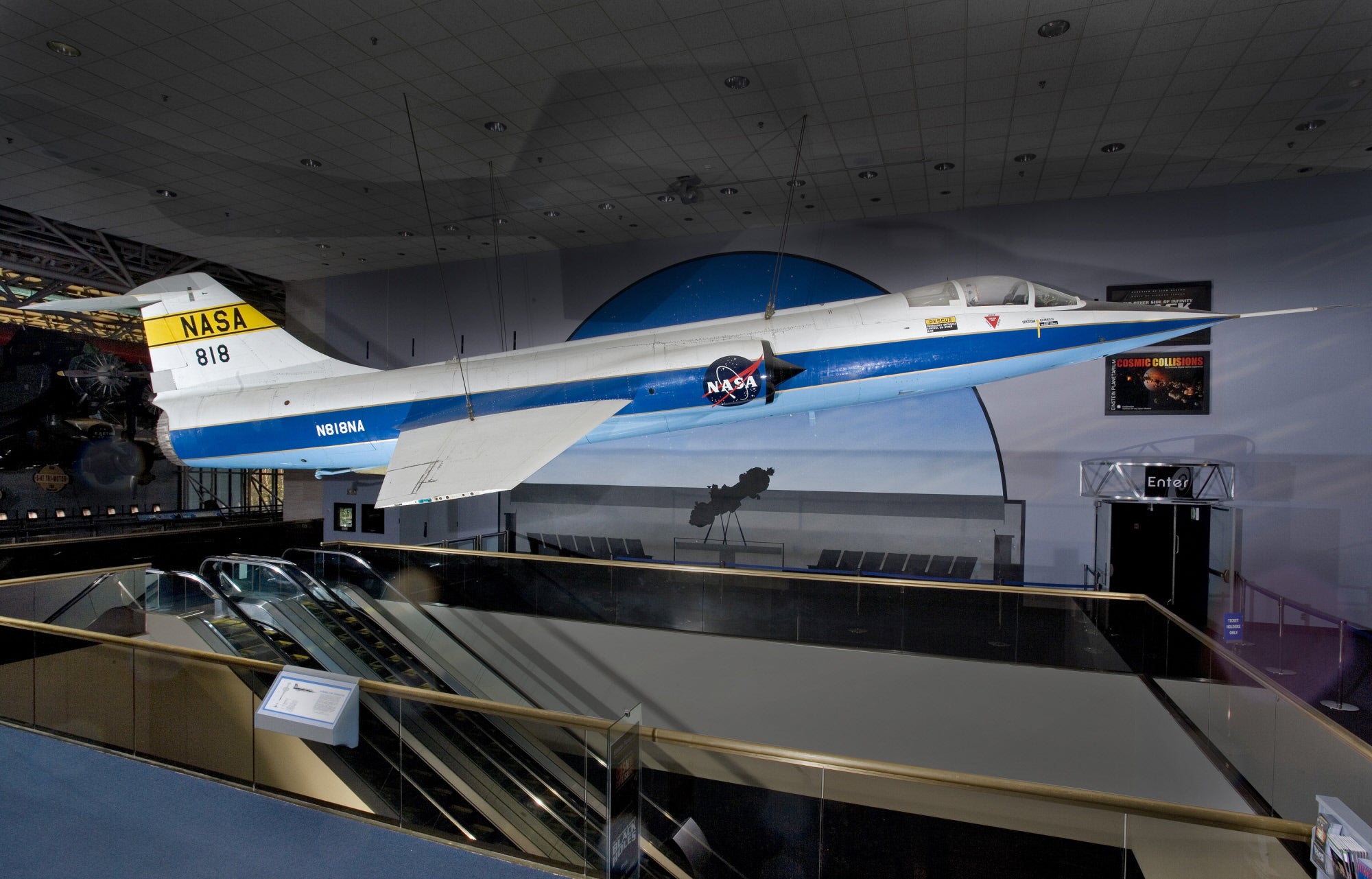
NASA has some very good liveries.
 MattHurting
> ttyymmnn
MattHurting
> ttyymmnn
03/05/2019 at 14:08 |
|
Also on March 3, 1991 was the crash of United flight 585 from Denver to Colorado Springs. Per wiki:
United Airlines Flight 5 8 5 was a scheduled passenger flight on March 3, 1991 from Denver to Colorado Springs , Colorado, carrying 20 passengers and 5 crew members on board. The plane experienced a rudder hardover while on final approach to runway 35 at Colorado Springs Municipal Airport , causing the plane to roll over and enter an uncontrolled dive. There were no survivors. [1] :xv
The NTSB was initially unable to resolve the cause of the crash, but after similar accidents and incidents involving Boeing 737 aircraft, the crash was determined to be caused by a defect in the design of the 737's rudder power control unit (PCU)
 MattHurting
> InFierority Complex
MattHurting
> InFierority Complex
03/05/2019 at 14:09 |
|
That museum in Pueblo is surprisingly good and has more exhibits than I anticipated.
 ttyymmnn
> TheRealBicycleBuck
ttyymmnn
> TheRealBicycleBuck
03/05/2019 at 14:35 |
|
Not good. Sorry to hear that. Still, what are the statistics of private pilot mortality vs. driving a car? You’d have to adjust somehow for the fact that you drive a car every day, but might not fly but once a week, or even much less.
 ttyymmnn
> MattHurting
ttyymmnn
> MattHurting
03/05/2019 at 14:37 |
|
I remember that one. Unfortunately, I don’t have the time to include all the crashes. I tend to stick to ones that are either significant historically, or ones that I choose as historian’s prerogative. Thanks for adding that.
 Highlander-Datsuns are Forever
> ttyymmnn
Highlander-Datsuns are Forever
> ttyymmnn
03/05/2019 at 14:43 |
|

Awesome.
 MattHurting
> ttyymmnn
MattHurting
> ttyymmnn
03/05/2019 at 14:48 |
|
For sure not all crashes can be included, you’d have 10,000 word posts. This one just happens to be local to me, though I wasn’t here when it happened.
 TheRealBicycleBuck
> ttyymmnn
TheRealBicycleBuck
> ttyymmnn
03/05/2019 at 14:54 |
|
Thanks.
That’s a tricky question to answer because of wildly different exposure rates and figuring out the best way to compare them. Per hour of exposure? If that’s the measure, private pilots have roughly 19 times greater risk. When measured per miles traveled, it’s about six times more dangerous to ride in a car than it is to take a flight in a general aviation plane.
https://www.livescience.com/49701-private-planes-safety.html
I have no doubt that pilots receive a lot more training than drivers do and pilots must undergo checks every couple of years in order to keep their certificate valid. That said, there’s a lot more than can go wrong in an airplane. They try to mitigate the danger through mechanical redundancy, equipment inspections, and training, but it’s a balance between keeping older planes flying and requiring too much (expensive) technology. The most significant difference between a modern Piper Archer and one built in the ‘60s is the avionics package. An older Archer in good shape will sell for $40k. A new one is $350k+.
I’m hoping that my wife doesn’t get too worked up about my flying. She’s already after me to update my will, so if that’s the measure of acceptance, I should be good.
 user314
> ttyymmnn
user314
> ttyymmnn
03/05/2019 at 15:04 |
|
The D-21 (Project TAGBOARD) seems like it was doomed from the start. The CIA wanted a way to get photos of high-value targets, then once Lockheed developed the Q-12 (as it was originally known), they lost interest as they were overwhelmed with the U-2 and A-12. The USAF stepped in, as they were interested in adapting the drone into a cruise missile (because USAF). The Q-12 became the D-21 and the two modified A-12s became M-21s (D for Daughter, M for Mother), and the whole project received the Tagboard name.
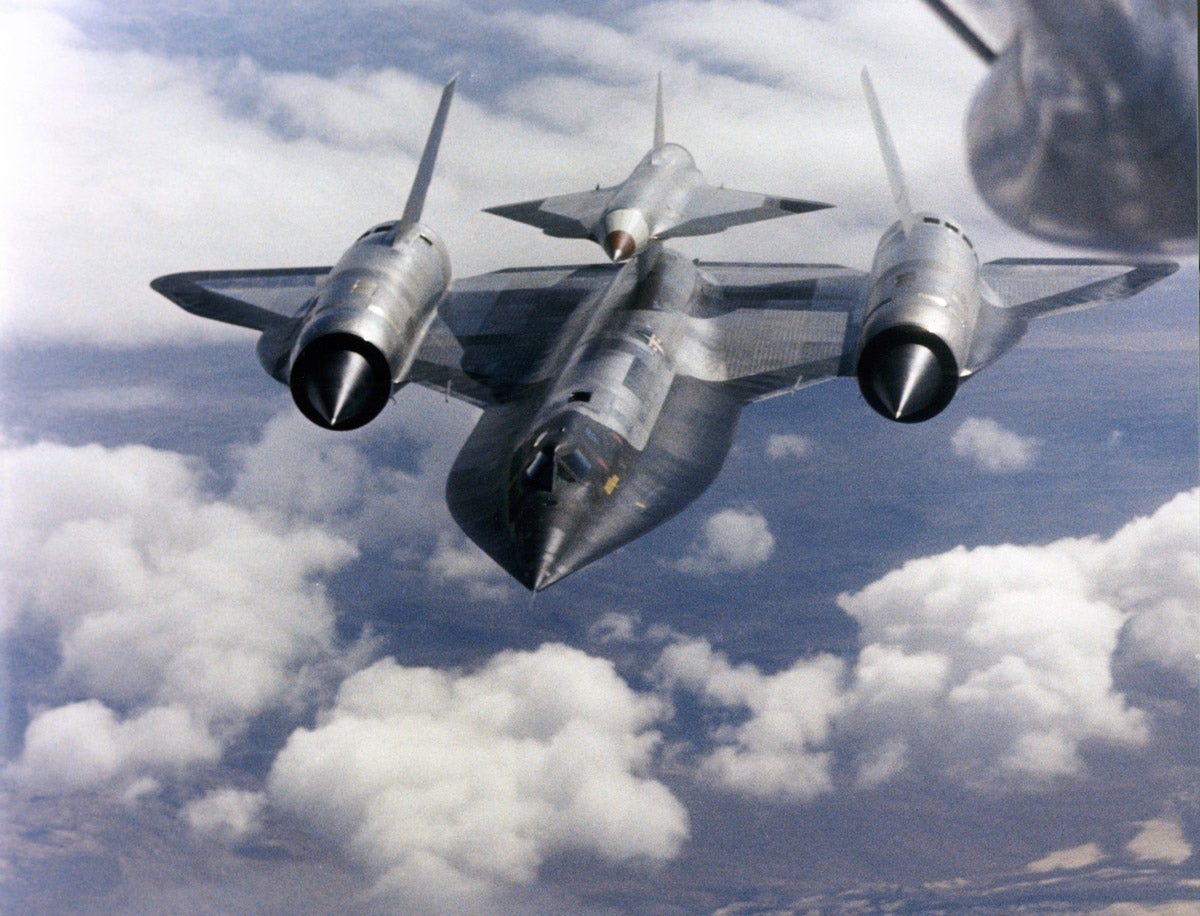
Once flight tests started, Lockheed quickly found the aerodynamic covers on the inlet and exhaust couldn’t be ejected without damaging both the D-21 and M-21 (which at Mach 3 was Bad News), so they were deleted. The first launch was successful, but the drone took several seconds to move away from the mothership, which the crew says “felt like two hours”.
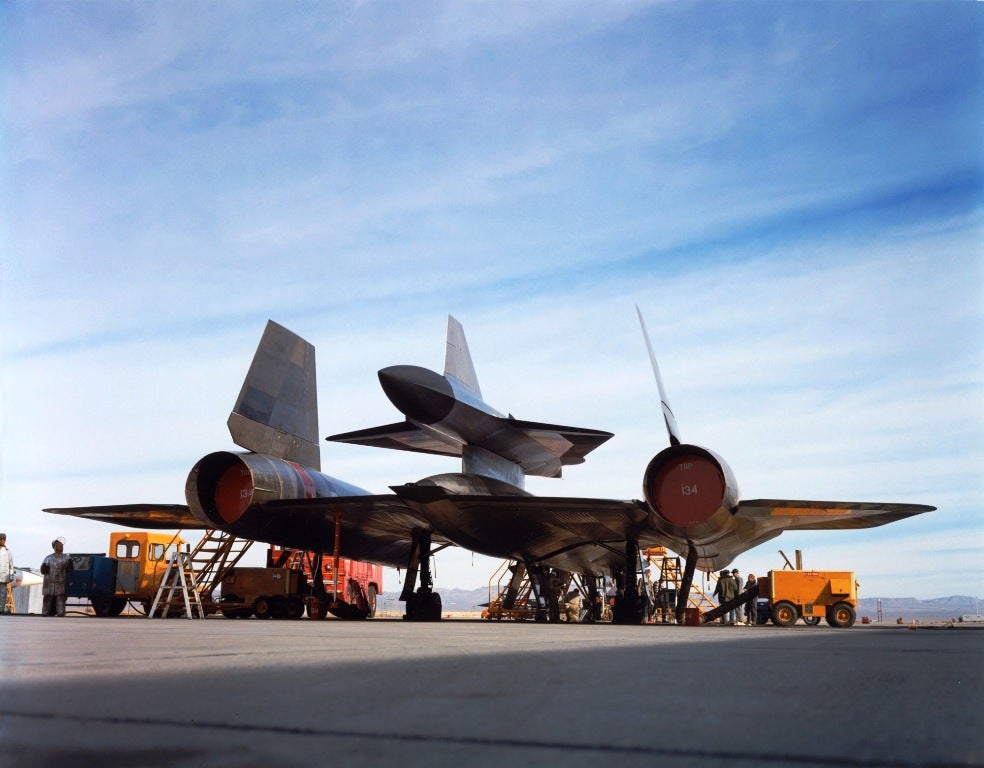
After the end of the program, the D-21s were stored at Norton AFB, then the Boneyard.
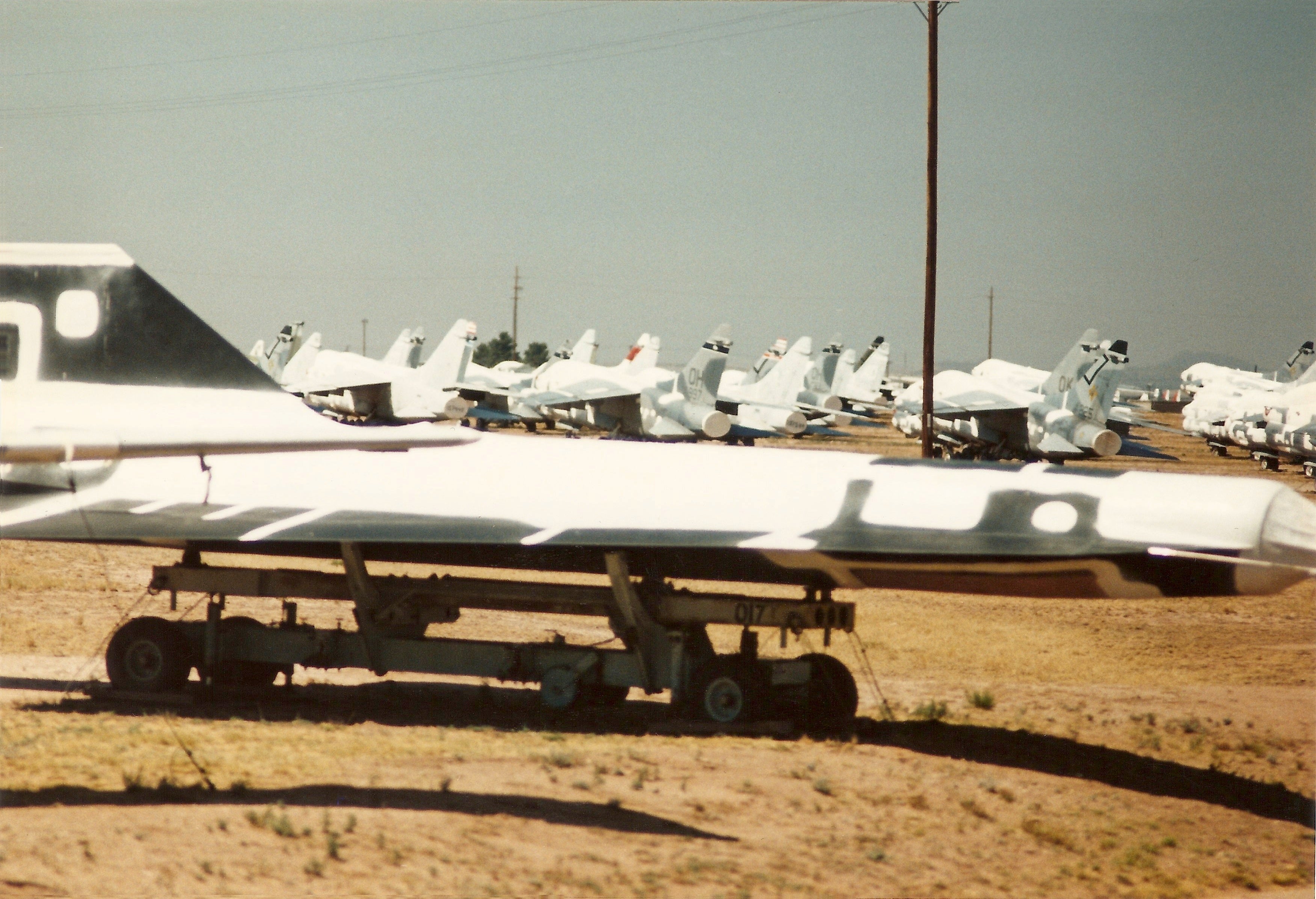
At some point in ‘76 or ‘77 the cover blew off one of the D-21s as a tour group was coming through, and pics of the “secret” plane were soon spreading, forcing th e USAF to acknowledge the plane as the GTD-21 (Ground Training).
Interestingly, the first D-21 to overfly China malfunctioned, and flew on, crashing in the Soviet Union. The wreckage was recovered, and the Tupolev OKB was tasked with reverse-engineering the drone using Soviet technology and materials. Soon plans for a copy, code named Voron (Raven), were in the works. The Voron would have been launched from a Tu-95 Bear, then accelerated to operating speed by a solid rocket booster, inadvertently aping the USAF’s launch of the D-21B from a B-52. Tupolev also investigated launching the Voron from a modified bomber version of the Tu-144, and later the Tu-160. Ultimately though the drone was not produced, and the plans abandoned.
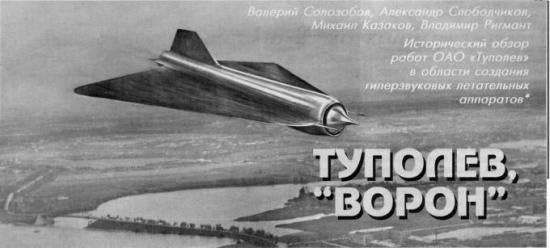
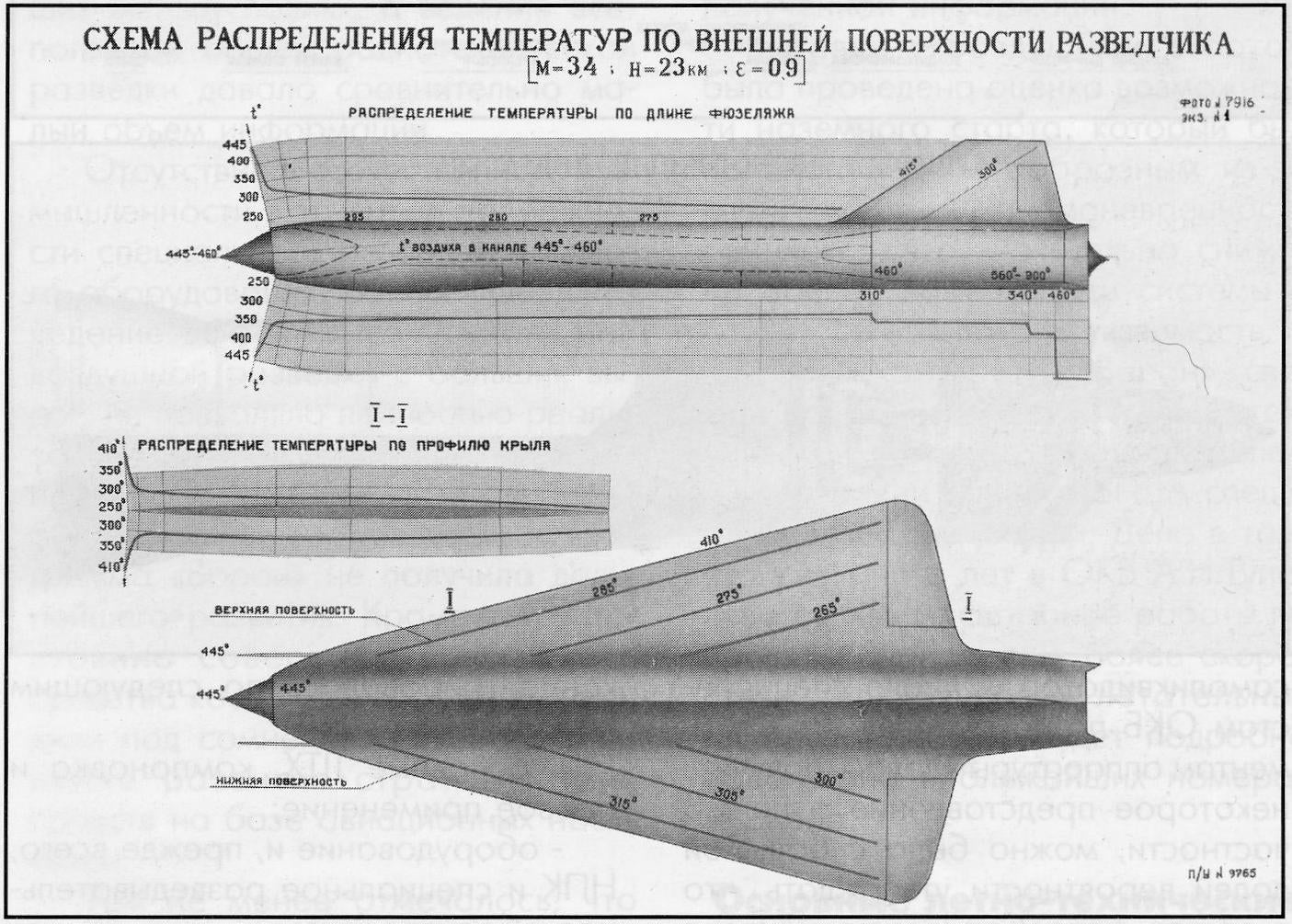
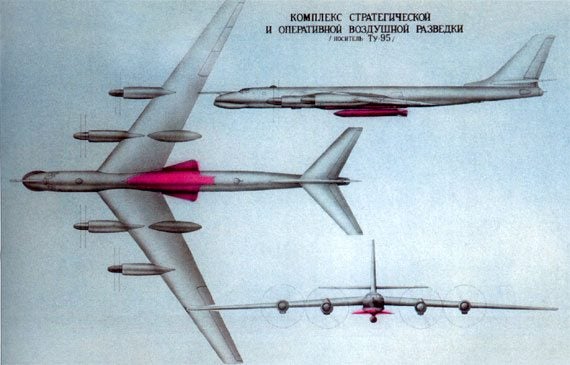
 You can tell a Finn but you can't tell him much
> ttyymmnn
You can tell a Finn but you can't tell him much
> ttyymmnn
03/05/2019 at 15:07 |
|
That picture of the M21 / D21 was taken early in the program. They started with a frangible fairing over the D21 engine inlet (and IIRC exhaust), but couldn’t get clean separation and abandoned it after a few test flights. I’ve got a book with some photos of damage caused when the fairing was separated, but can’t find any on the internet.
 user314
> RamblinRover Luxury-Yacht
user314
> RamblinRover Luxury-Yacht
03/05/2019 at 15:14 |
|
Academy too, they even call it the GTD-21

Testors had one back in the Eighties, though it might still be available through Italieri
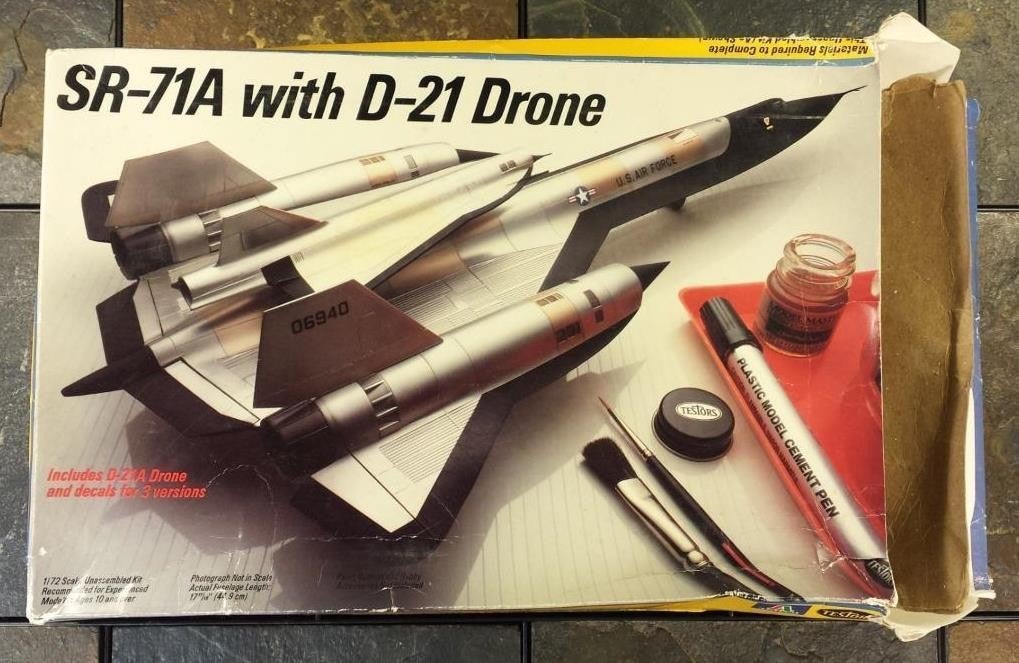
The Testors kit is nice because they tooled the kit in such a way that the tail and nose sections are separate from the fuselage & wings , so if you grab this kit and a YF-12 you can make a more accurate M-21 (or A-12, or SR-71C...) .
 InFierority Complex
> MattHurting
InFierority Complex
> MattHurting
03/05/2019 at 15:22 |
|
It really is kind of a hidden gem. Don’t know how my parents heard about it at the time (would have been the 90s or so, I think ) but I’m glad we went.
 RamblinRover Luxury-Yacht
> user314
RamblinRover Luxury-Yacht
> user314
03/05/2019 at 16:43 |
|
Filed to: Information I Did Not Know I Required Until Just Now.
 user314
> RamblinRover Luxury-Yacht
user314
> RamblinRover Luxury-Yacht
03/05/2019 at 17:01 |
|
I bought up a couple copies of each off eBay a few years back, and I’m 90% done with a 1/72 scale copy of The Bastard . Just gotta wait for the weather to improve so I can finish the paint.
After that, either a production F-12B (which only existed as a mock- up, but would have had chines on the radome and the folding ventral fin removed )
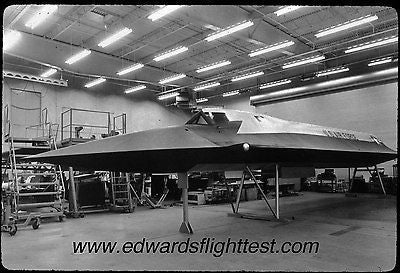
or the A-12 trainer, known as the
Titanium Goose
.
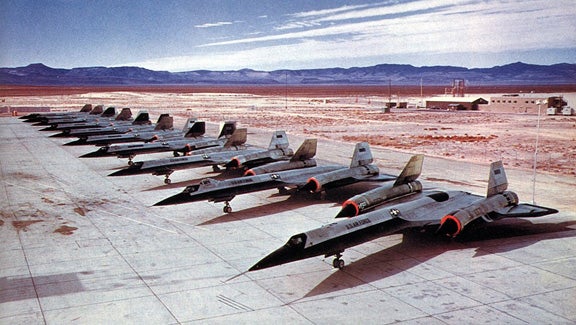
(2nd from the front)
 RamblinRover Luxury-Yacht
> user314
RamblinRover Luxury-Yacht
> user314
03/05/2019 at 17:07 |
|
I can speak from experience that Apoxie(R), while grainy and smeary when it’s being mixed, does not solidify with any real grain and can be easily massaged smooth while it’s curing, as well as being pretty easy to Dremel. In case you feel like sculpting anything.
 ttyymmnn
> You can tell a Finn but you can't tell him much
ttyymmnn
> You can tell a Finn but you can't tell him much
03/05/2019 at 17:22 |
|
Not surprisingly, there were very few pictures of that a/c. That’s the best one I could find.
 ttyymmnn
> user314
ttyymmnn
> user314
03/05/2019 at 18:09 |
|
Some years ago I was poking around the Google satellite maps of Davis Monthan and found a arrowhead-shaped aircraft that I couldn’t identify. I took a screen shot of it, but I think that shot is lost or buried on some hard drive. I never did figure out what it was, but now I wonder if it was D-21.
Thanks for all the info and pictures. I didn’t know about the Russian version.
 ttyymmnn
> MattHurting
ttyymmnn
> MattHurting
03/05/2019 at 18:09 |
|
I’m over 6,000 words on some of these posts as it is.
 You can tell a Finn but you can't tell him much
> ttyymmnn
You can tell a Finn but you can't tell him much
> ttyymmnn
03/05/2019 at 19:01 |
|
If you don’t have it yet, this is $50 well spent. There are so many amazing pictures and stories in this book.
The Complete Book of the SR-71 Blackbird: The Illustrated Profile of Every Aircraft, Crew, and Breakthrough of the World’s Fastest Stealth Jet https://www.amazon.com/dp/0760348499/ref=cm_sw_r_cp_api_i_I1WFCbGY0QW6P
 ttyymmnn
> You can tell a Finn but you can't tell him much
ttyymmnn
> You can tell a Finn but you can't tell him much
03/05/2019 at 19:05 |
|
Why would you buy a book like that on Kindle?? That’s one you have to hold in your hands and savor.
 You can tell a Finn but you can't tell him much
> ttyymmnn
You can tell a Finn but you can't tell him much
> ttyymmnn
03/05/2019 at 19:09 |
|
I just grabbed a link on my phone and didn’t look at which version it was for . The hardcover is definitely sitting on the bookshelf at the moment. I’ve read one or two books on my phone, but would way rather have a real book. As a result there is a small forest worth of books in my house.
 ttyymmnn
> You can tell a Finn but you can't tell him much
ttyymmnn
> You can tell a Finn but you can't tell him much
03/05/2019 at 19:27 |
|
You and me both. I’m reading The Hobbit to my sons, from the beautiful boxed anniversary edition my brother got me for my birthday back in 1983. I wouldn’t have it any other way.
 ttyymmnn
> TheRealBicycleBuck
ttyymmnn
> TheRealBicycleBuck
03/05/2019 at 21:49 |
|
I guess, in a certain sense, just about any person with a reasonable amount of coordination can drive a car, but it takes a much higher level of dedication and practice to become proficient at flying. You also have to be able to handle an emergency without freaking out. Losing an engine in your Ford Explorer is much less of an issue than losing an engine at altitude.
We also throw out that time worn statistic that flying on a (commercial) plane is safer than driving. Of course, commercial pilots have tons more hours than your average weekend warrior, higher levels of training, many many hours of sim time, etc.
 TheRealBicycleBuck
> ttyymmnn
TheRealBicycleBuck
> ttyymmnn
03/05/2019 at 22:34 |
|
All true.
Engine out? Remember your A, B, Cs:
A - Airspeed. Make sure the wings are level and the glide slope is set for best glide.
B - Begin to look for a place to land. Roads can be good, but look for poles and towers which indicate power lines. Open fields are better.
C - Checklist for landing
D - Declare an emergency. Set transponder to 7700 and call for assistance either on the local tower band, the UNICOM band,
or on
121.5.
I didn’t see that fellow in the video do any of these. I was really surprised that he didn’t level off sooner and go for best glide. It all worked out in the end, I suppose.
 ttyymmnn
> TheRealBicycleBuck
ttyymmnn
> TheRealBicycleBuck
03/05/2019 at 22:45 |
|
Never r un o ut of a ltitude, a irspeed, and i deas at the s ame t ime. That could be said of a lot of things.
 user314
> ttyymmnn
user314
> ttyymmnn
03/05/2019 at 22:49 |
|
Neither did I, this must have been recently uncovered. I knew the story about the Chinese having over the one they recovered, but the Russians trying to build a copy is new to me.
 SCARPS22
> ttyymmnn
SCARPS22
> ttyymmnn
03/06/2019 at 11:06 |
|
Richie Havens died of a heart attack, I think you meant Richie “La Bamba”
Valens.
 ttyymmnn
> SCARPS22
ttyymmnn
> SCARPS22
03/06/2019 at 11:23 |
|
You are correct. I was pulling that list out of my head, and was trying to remember all three who were on that flight. Thanks.